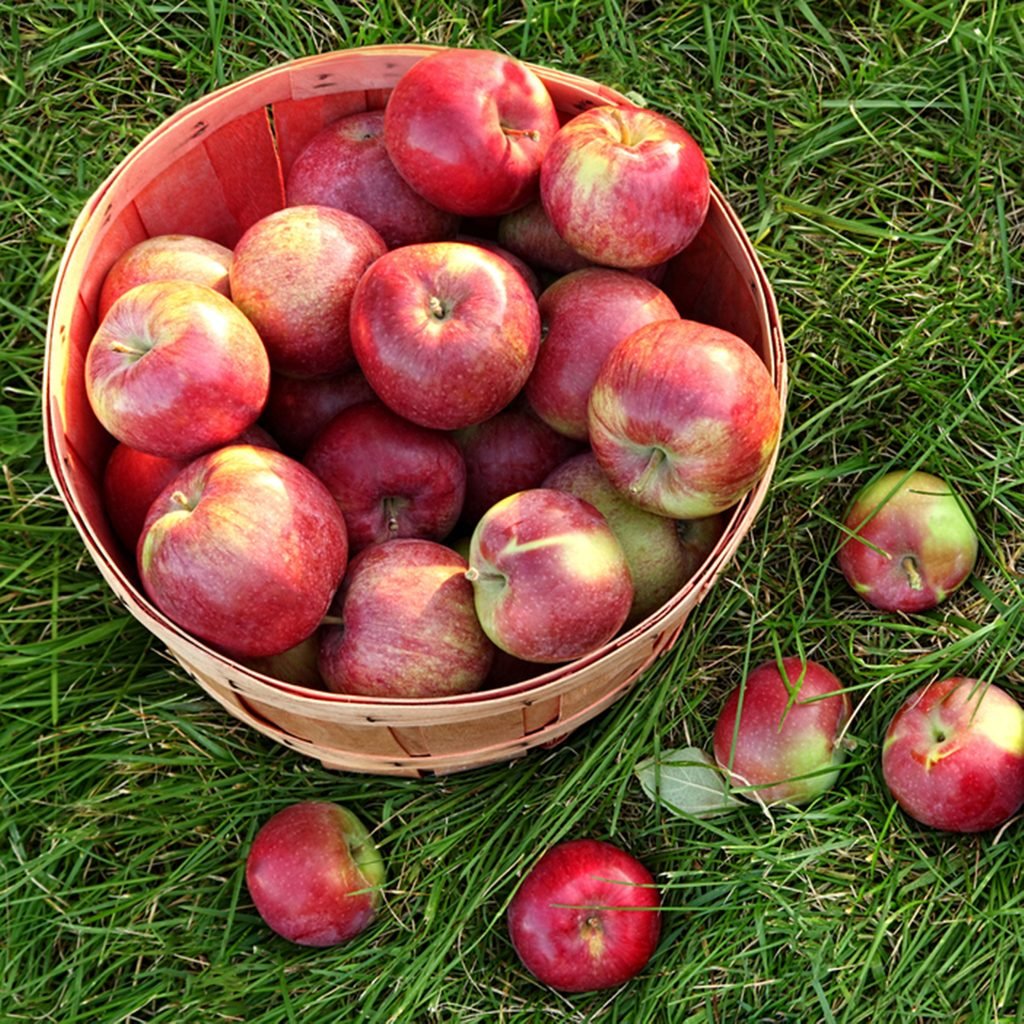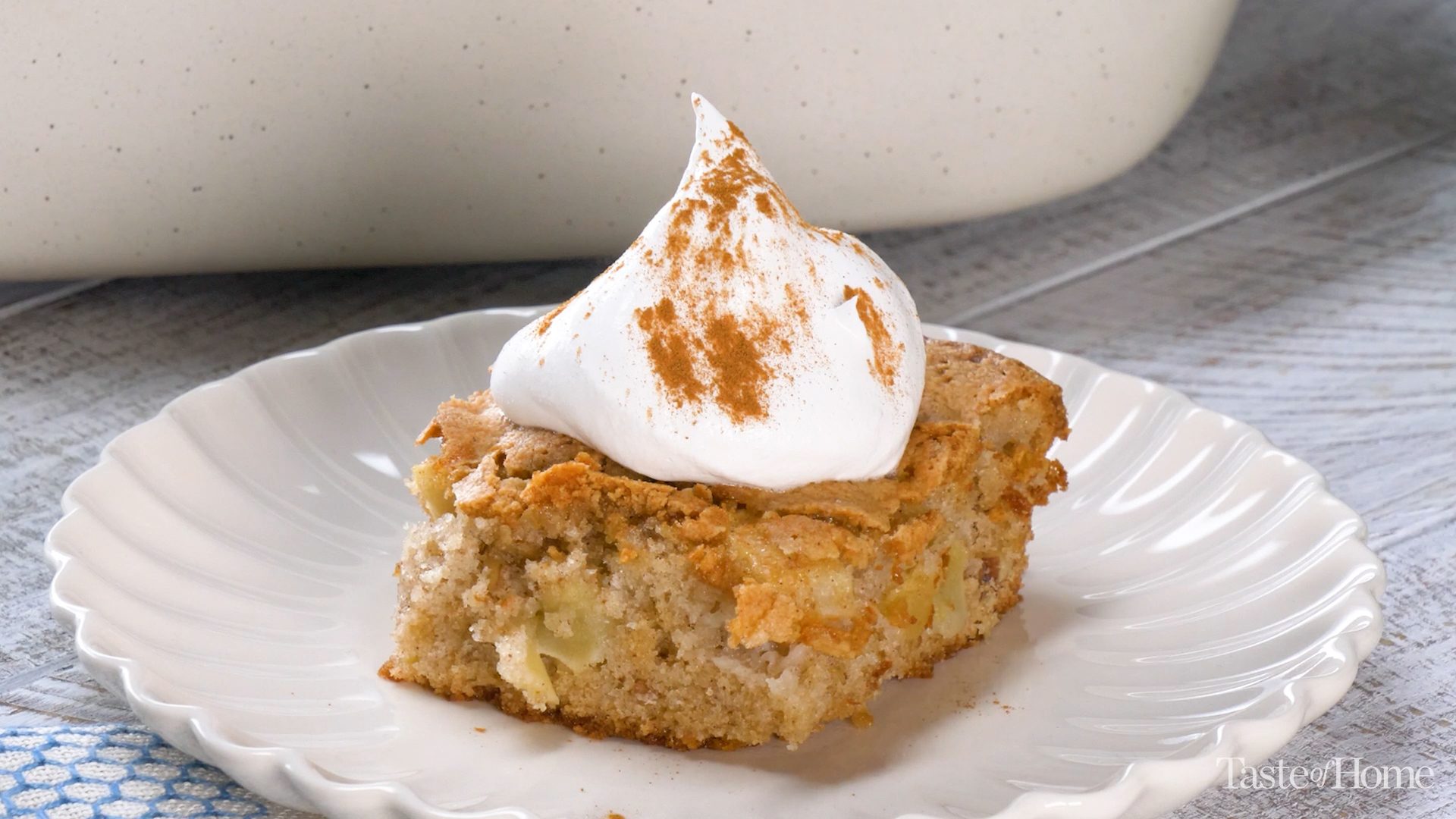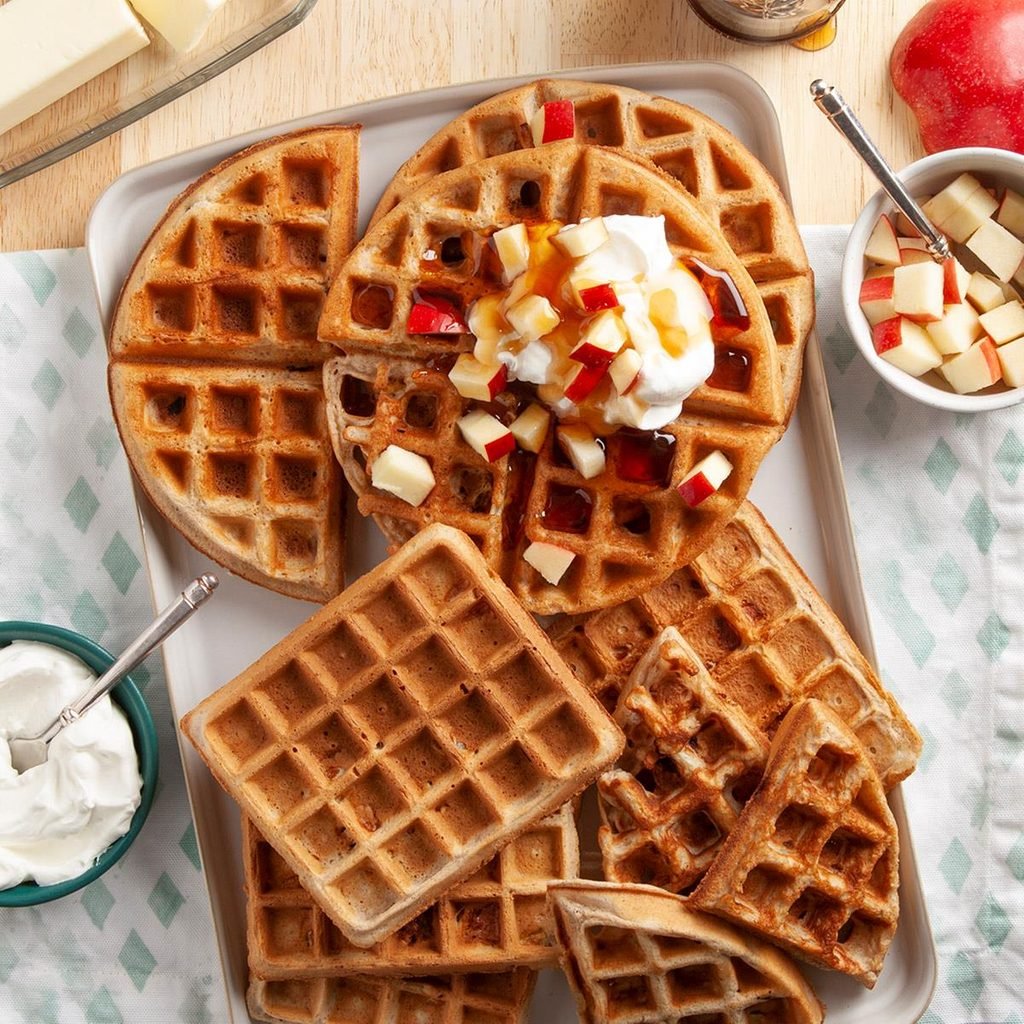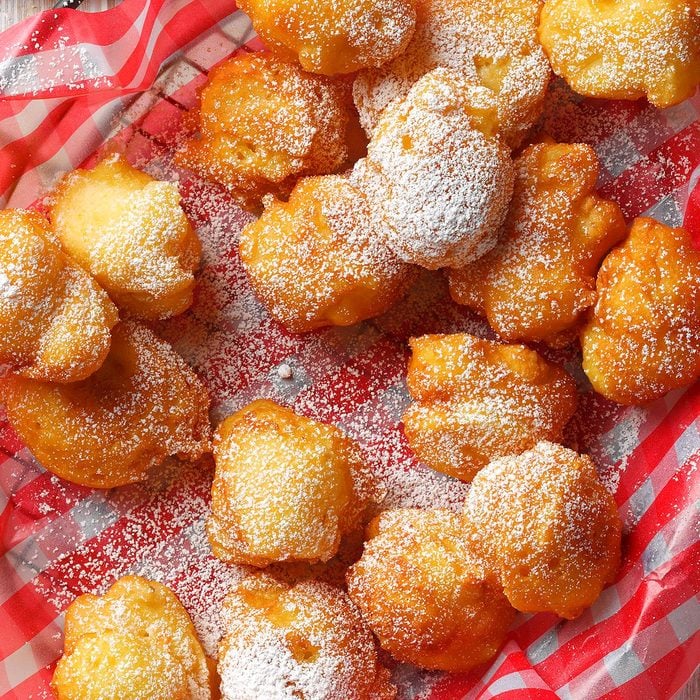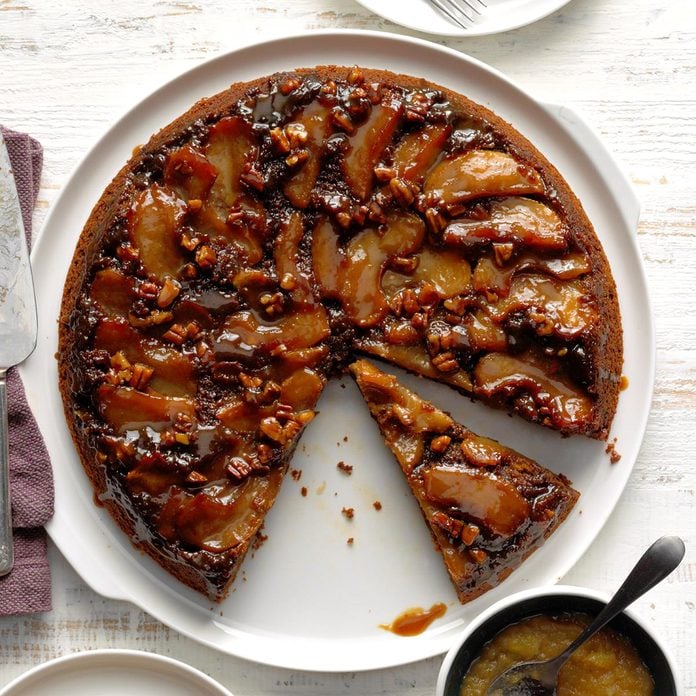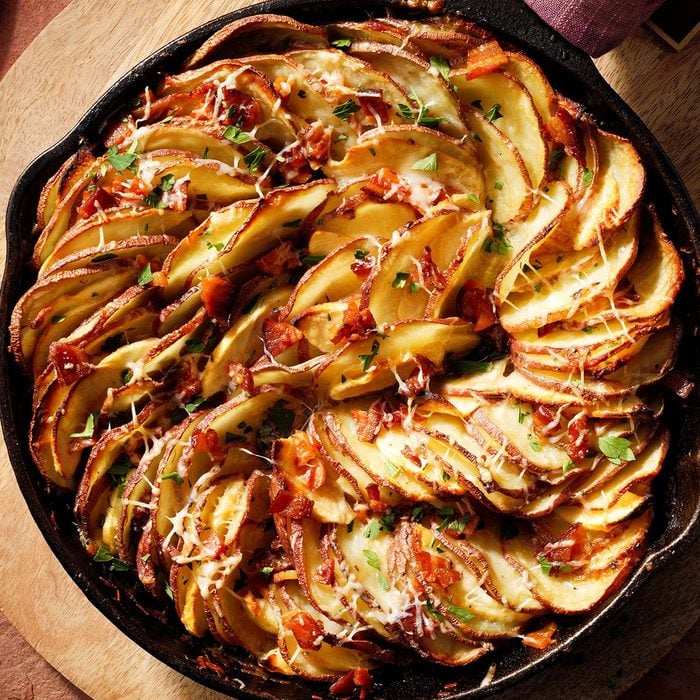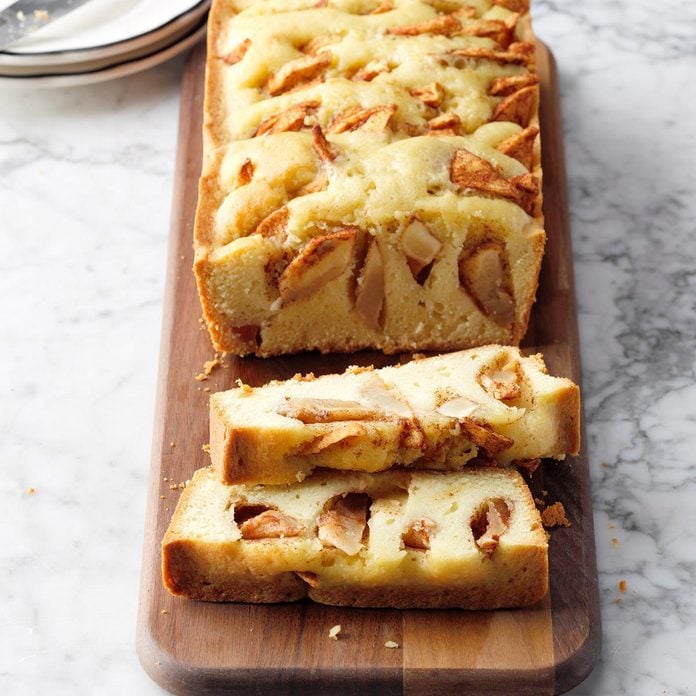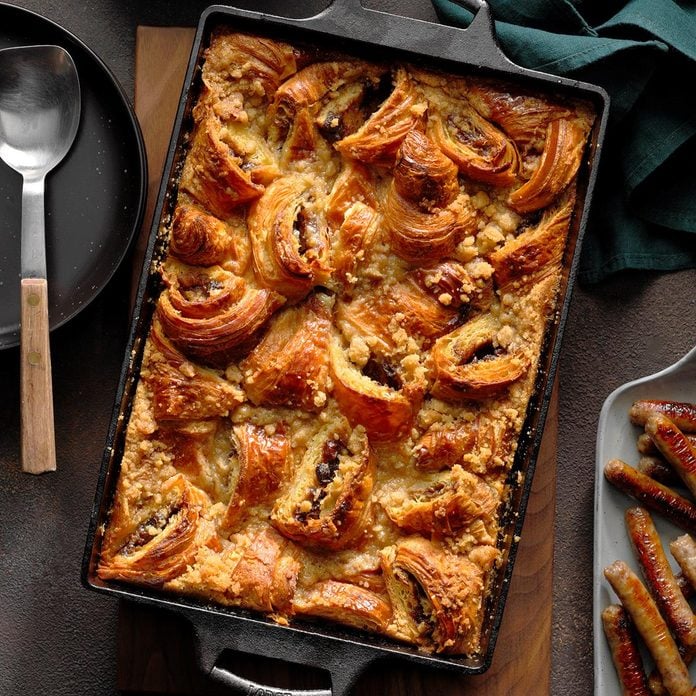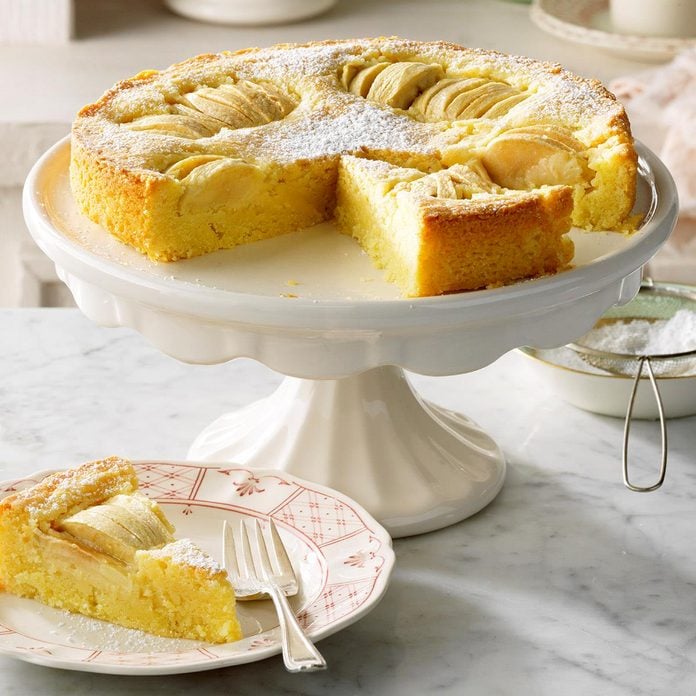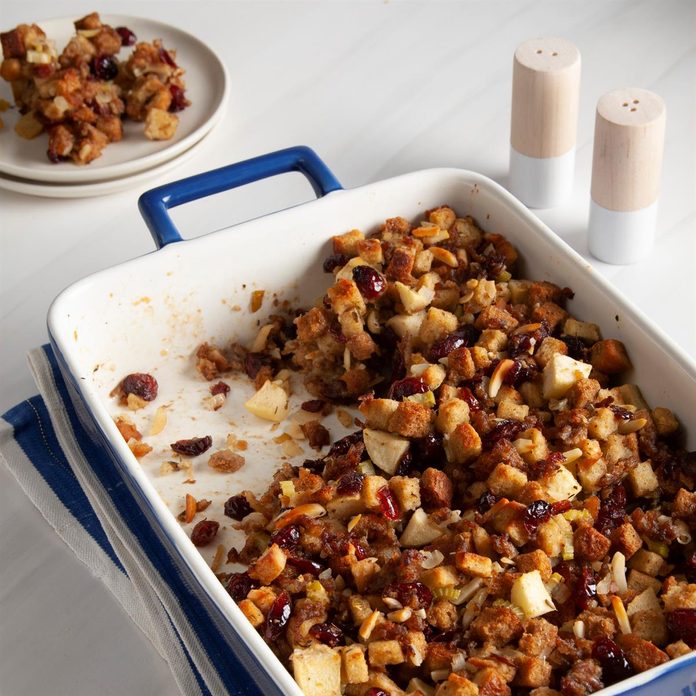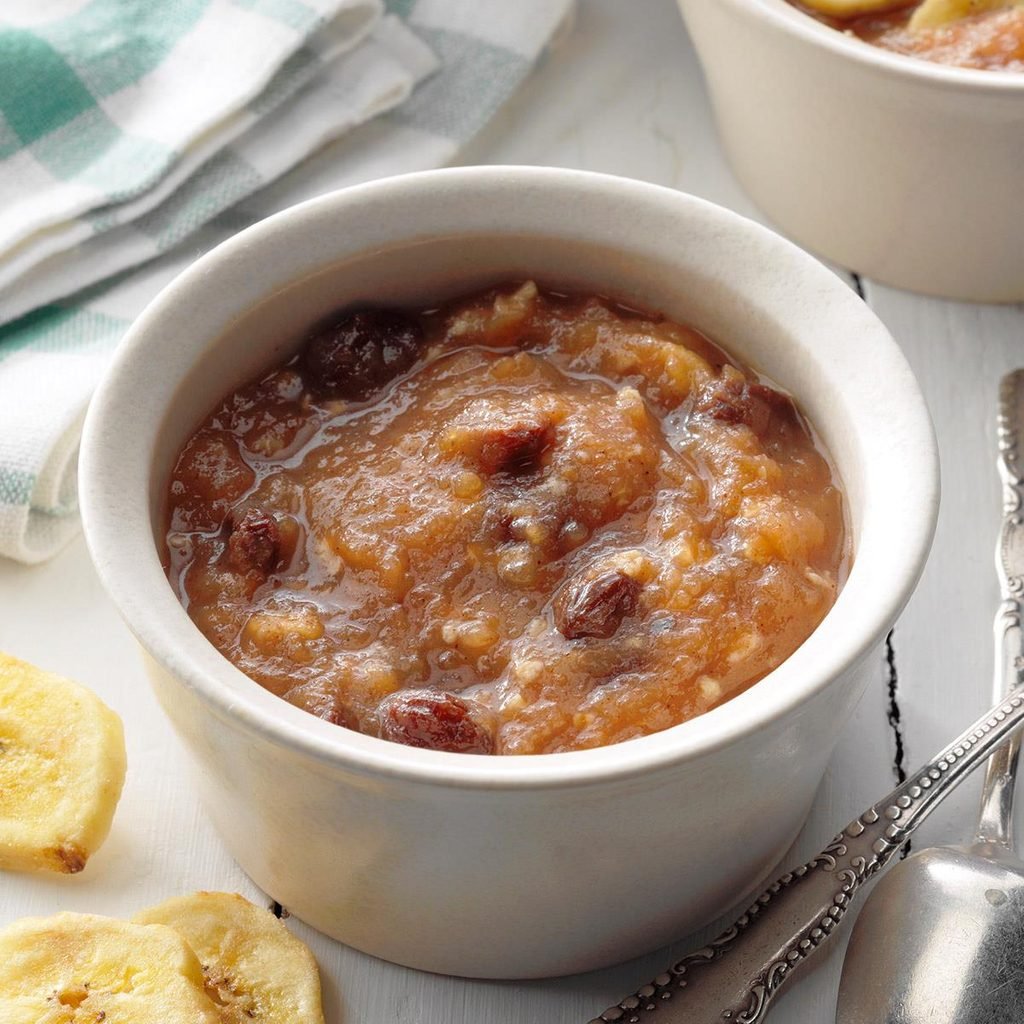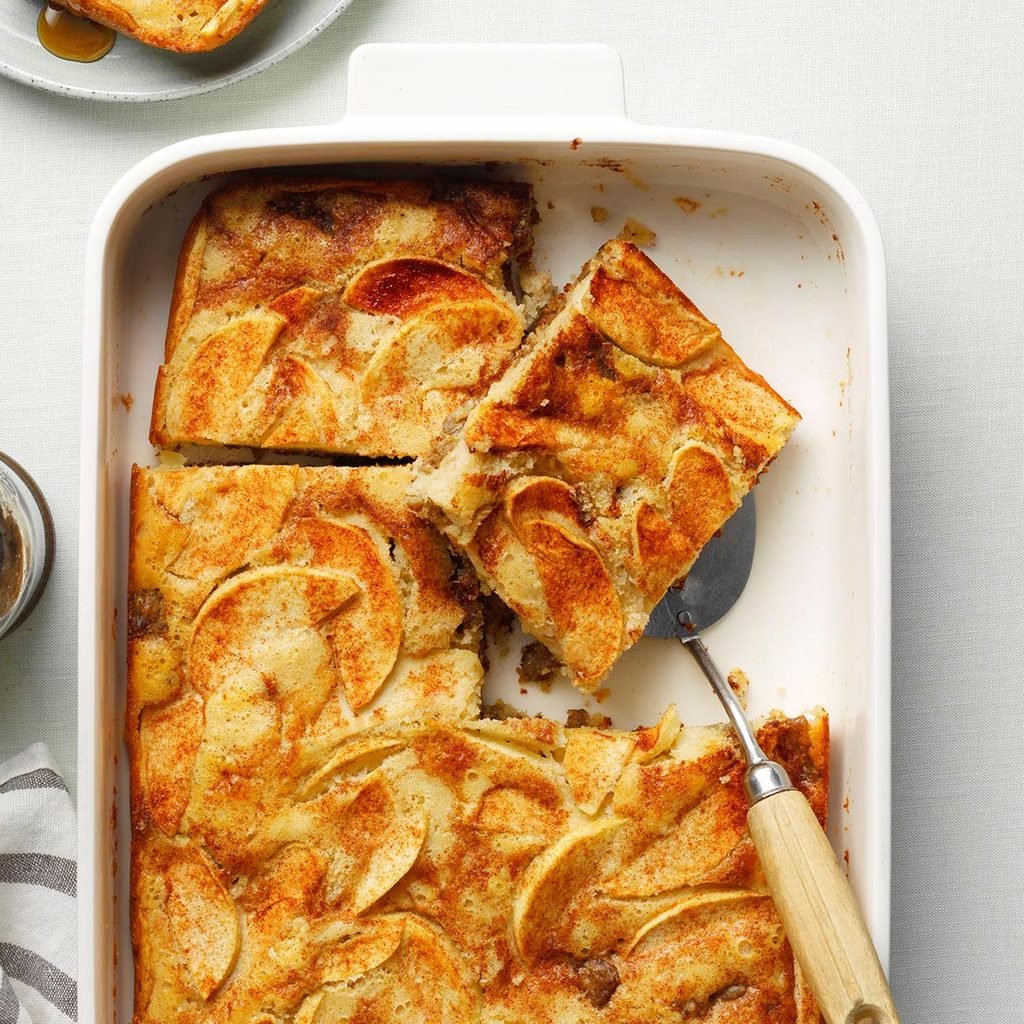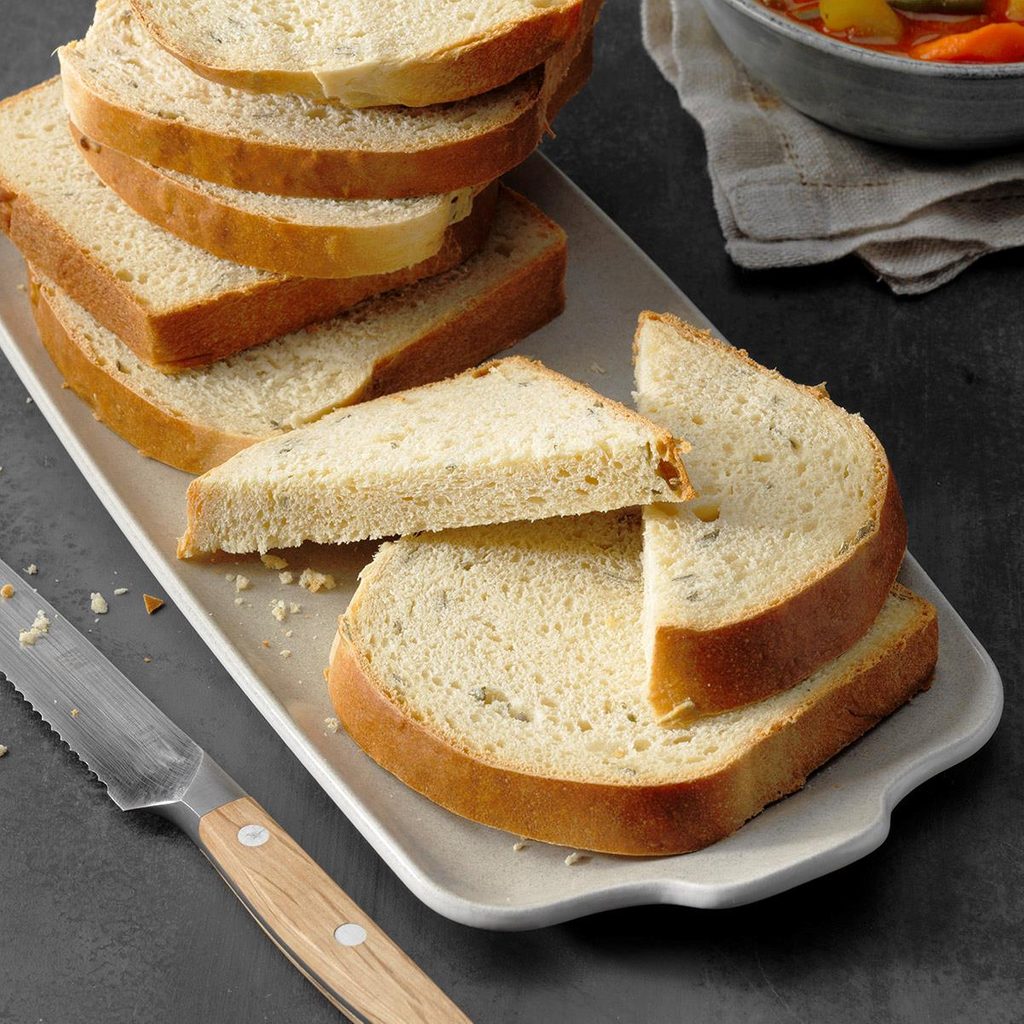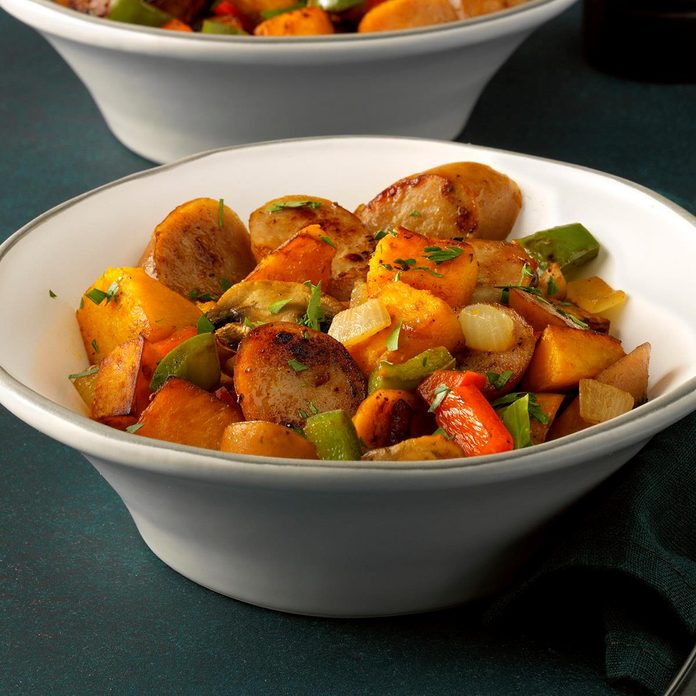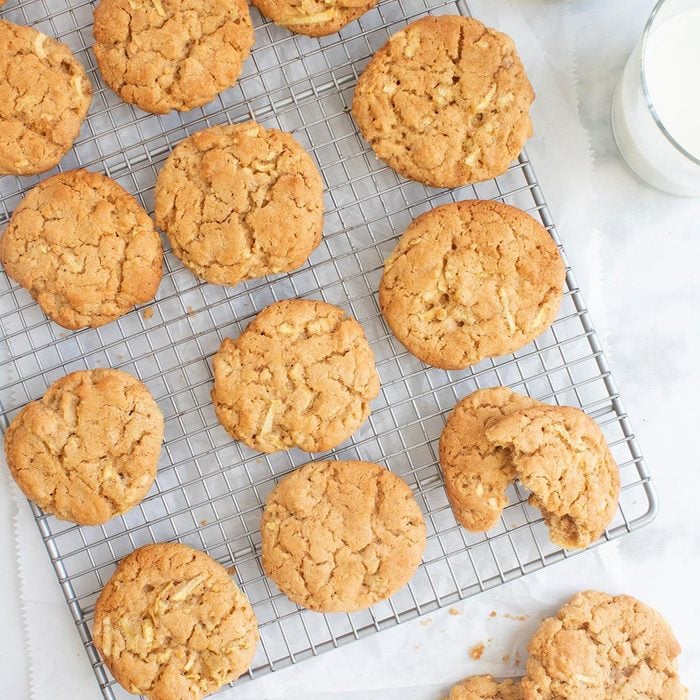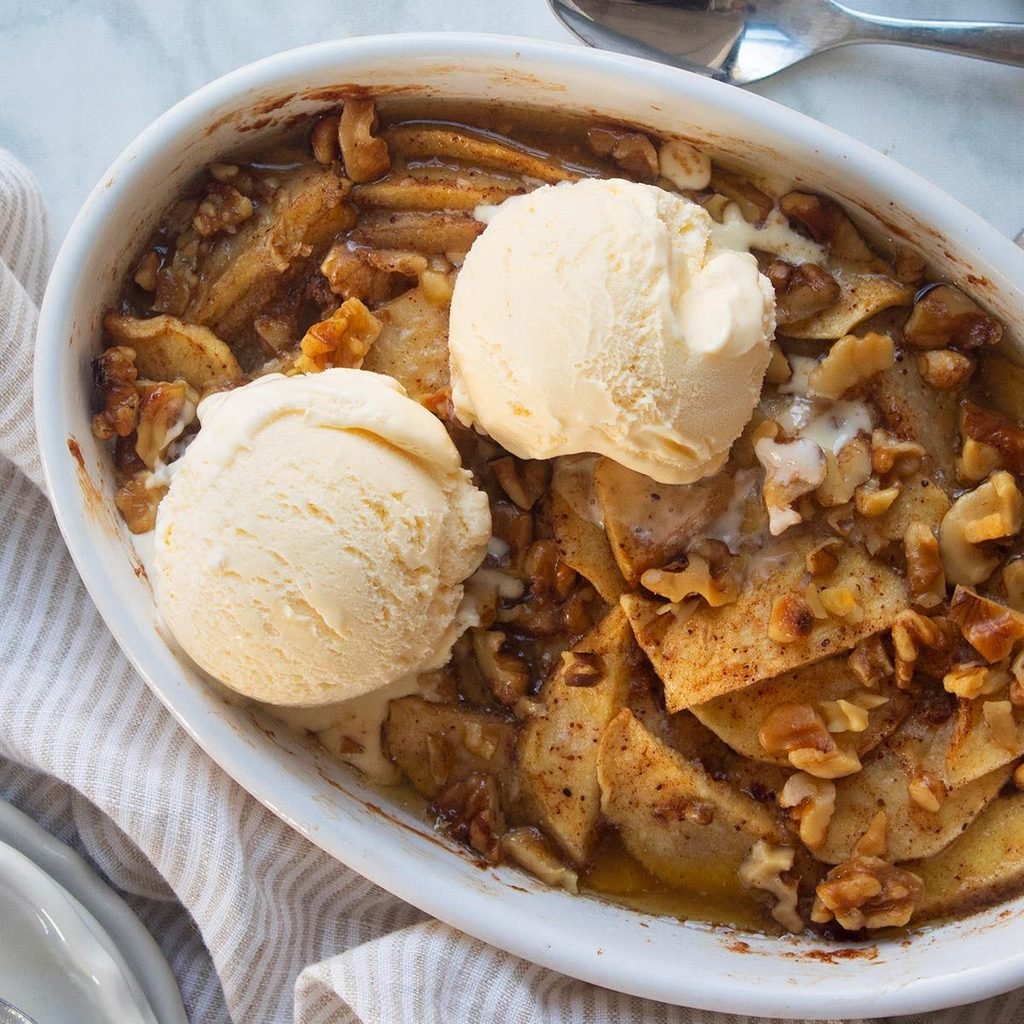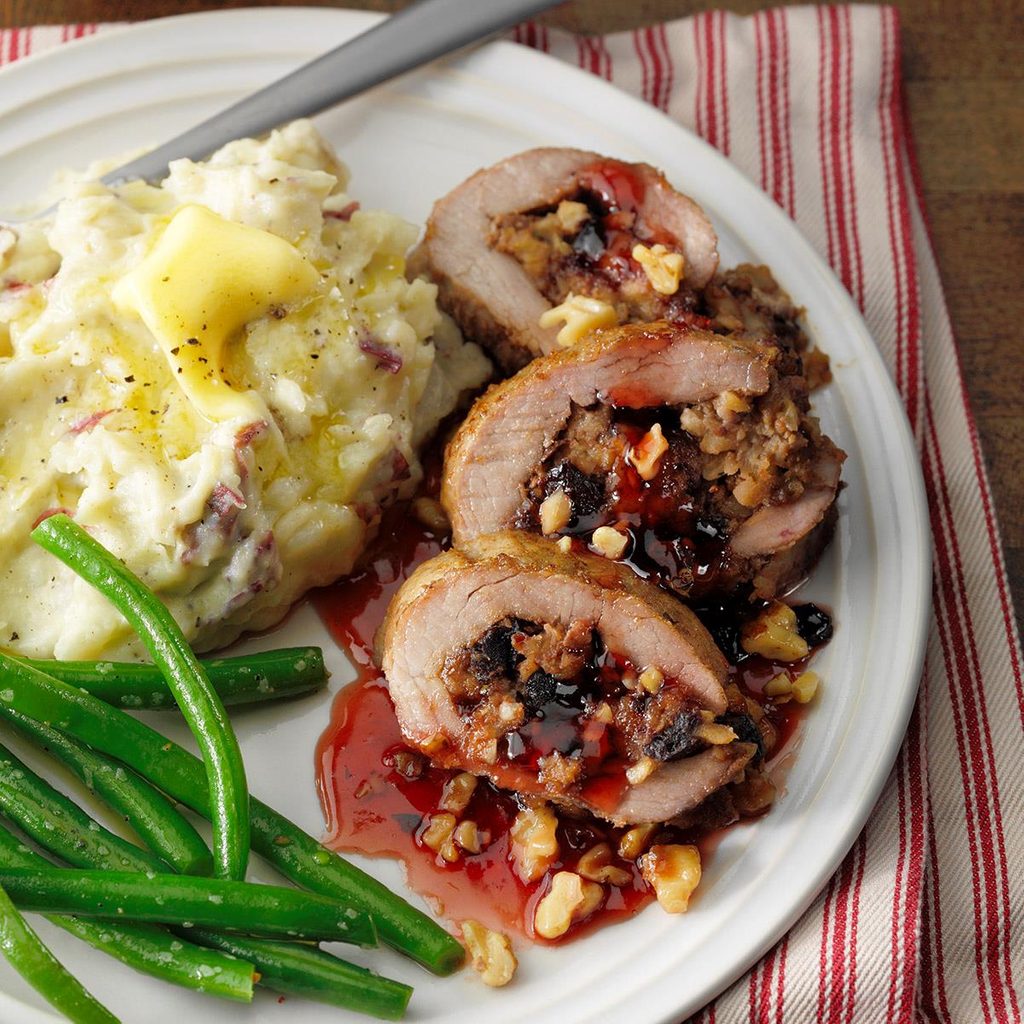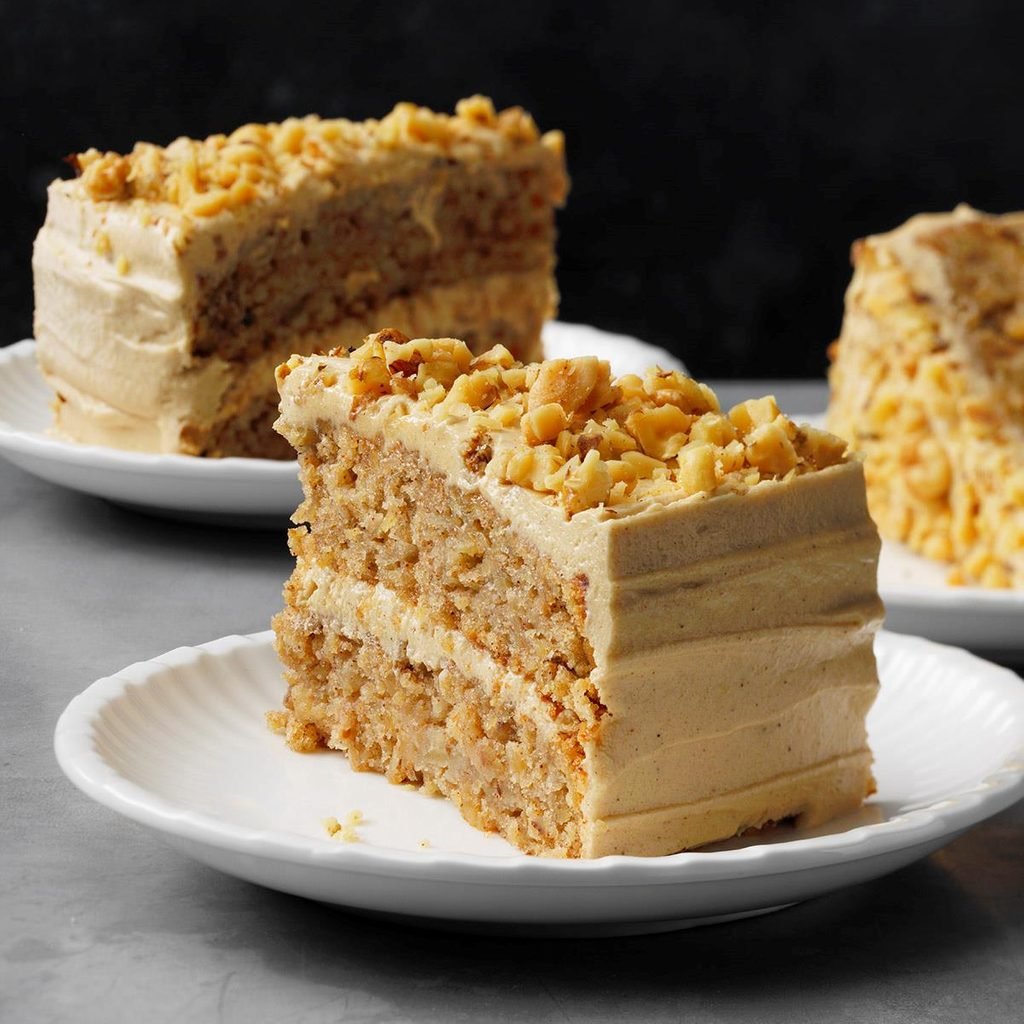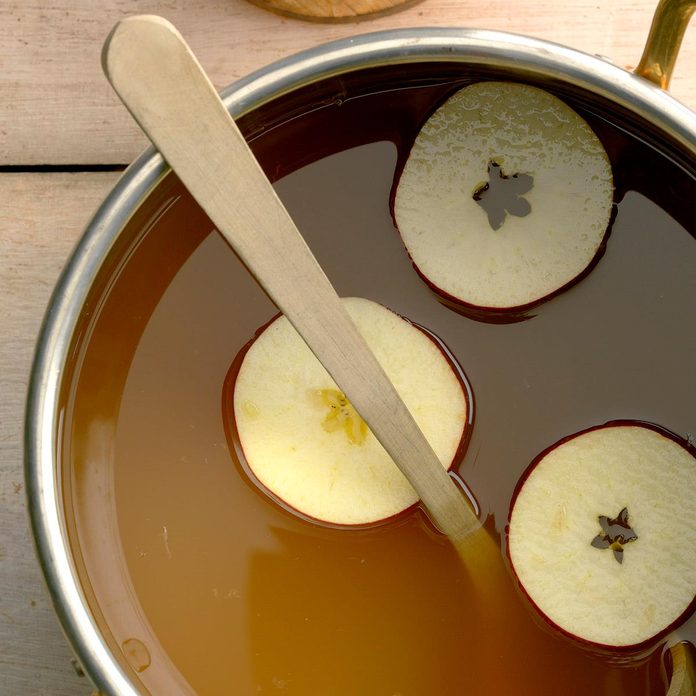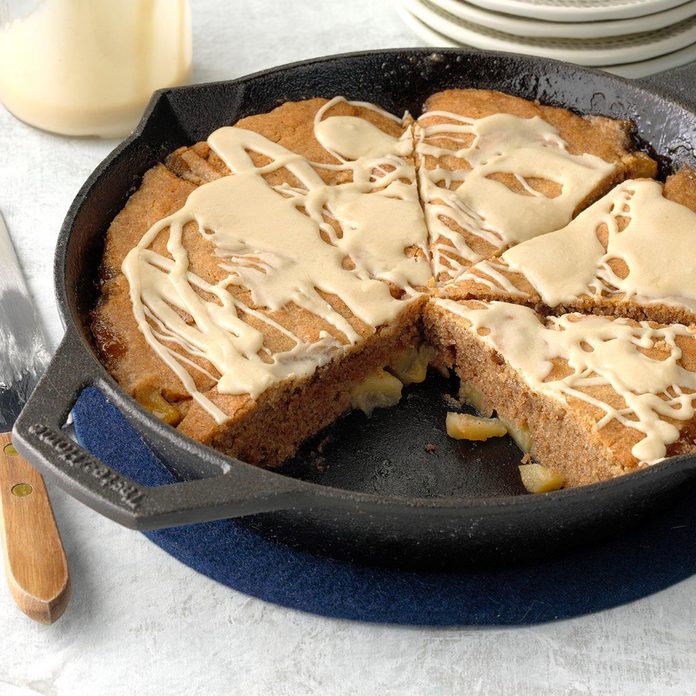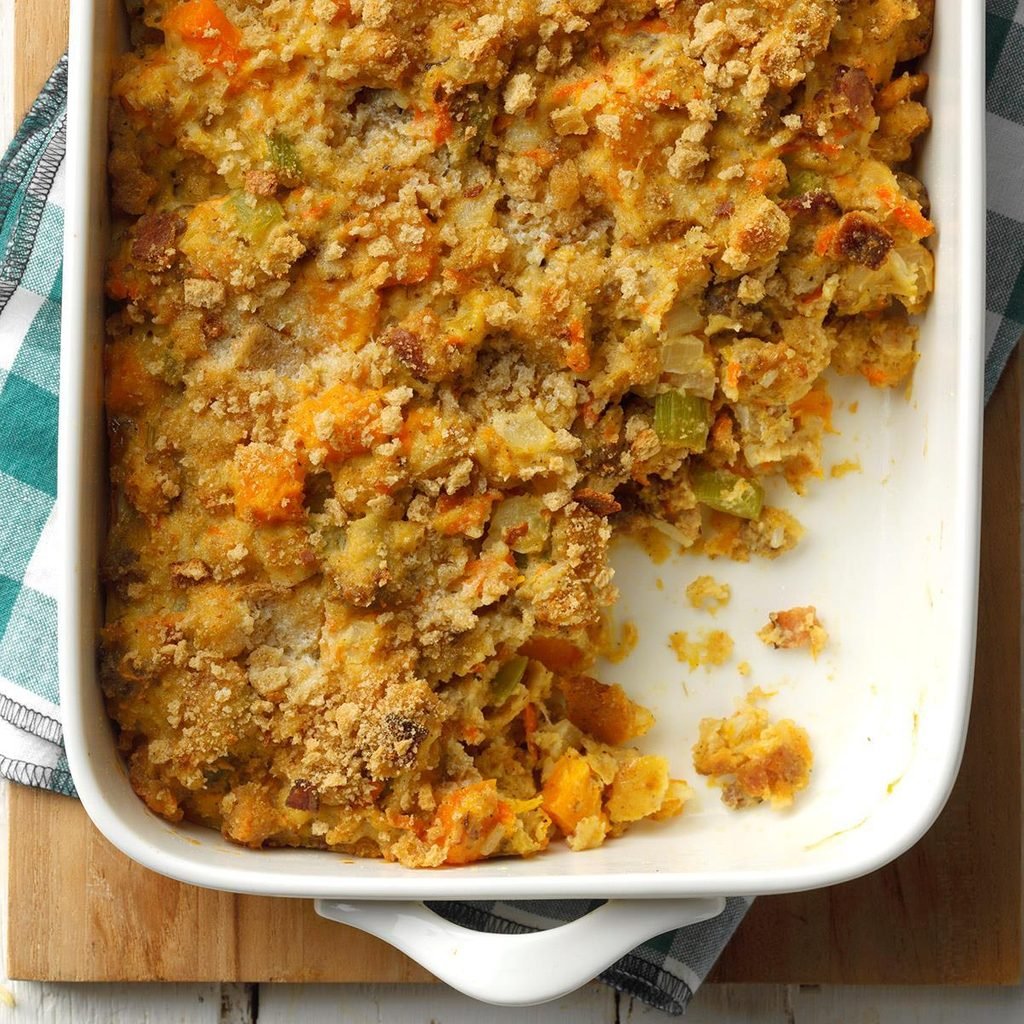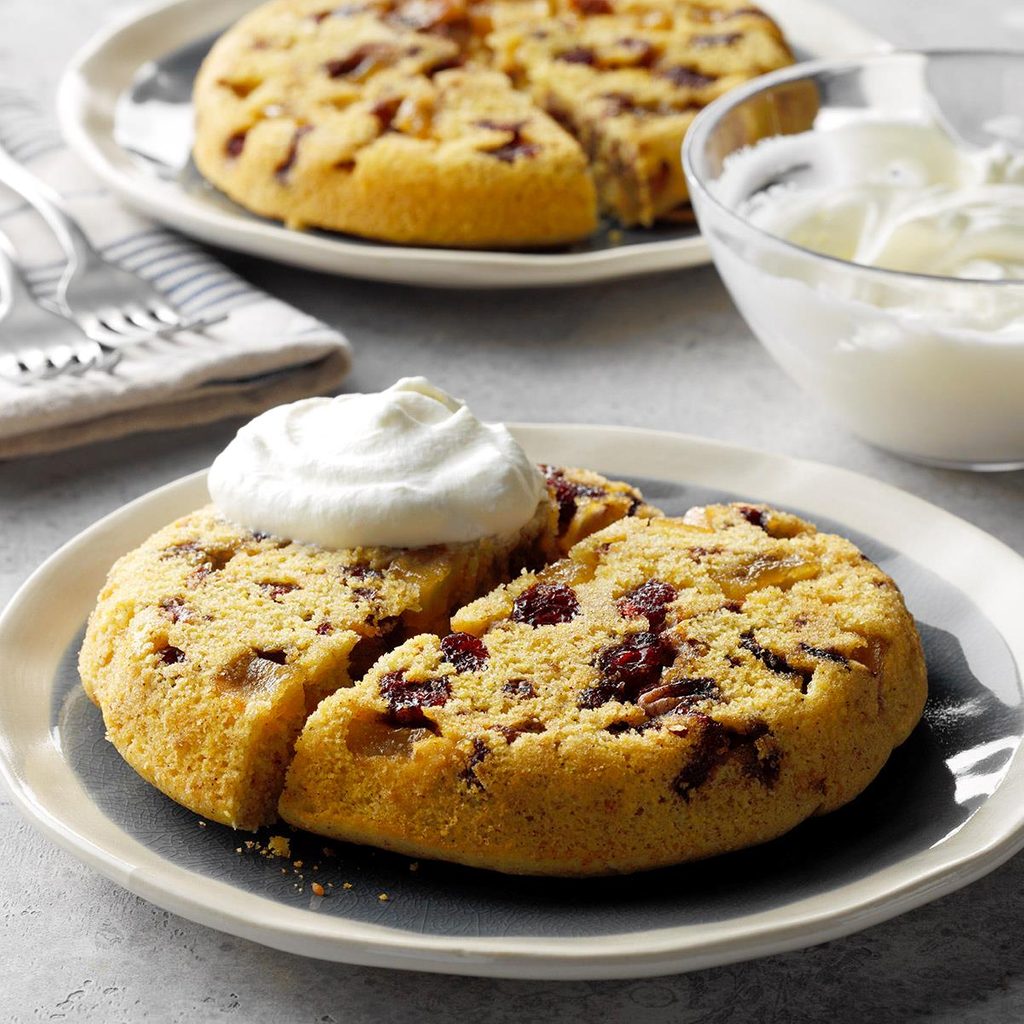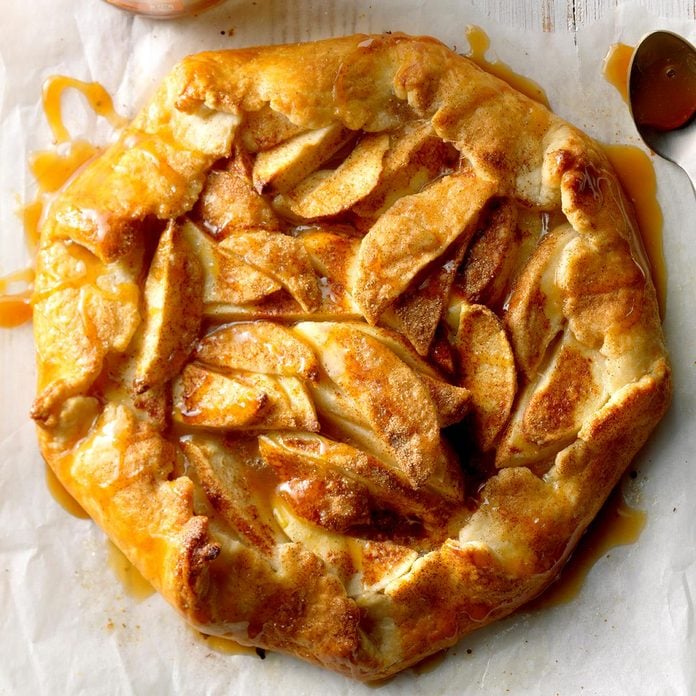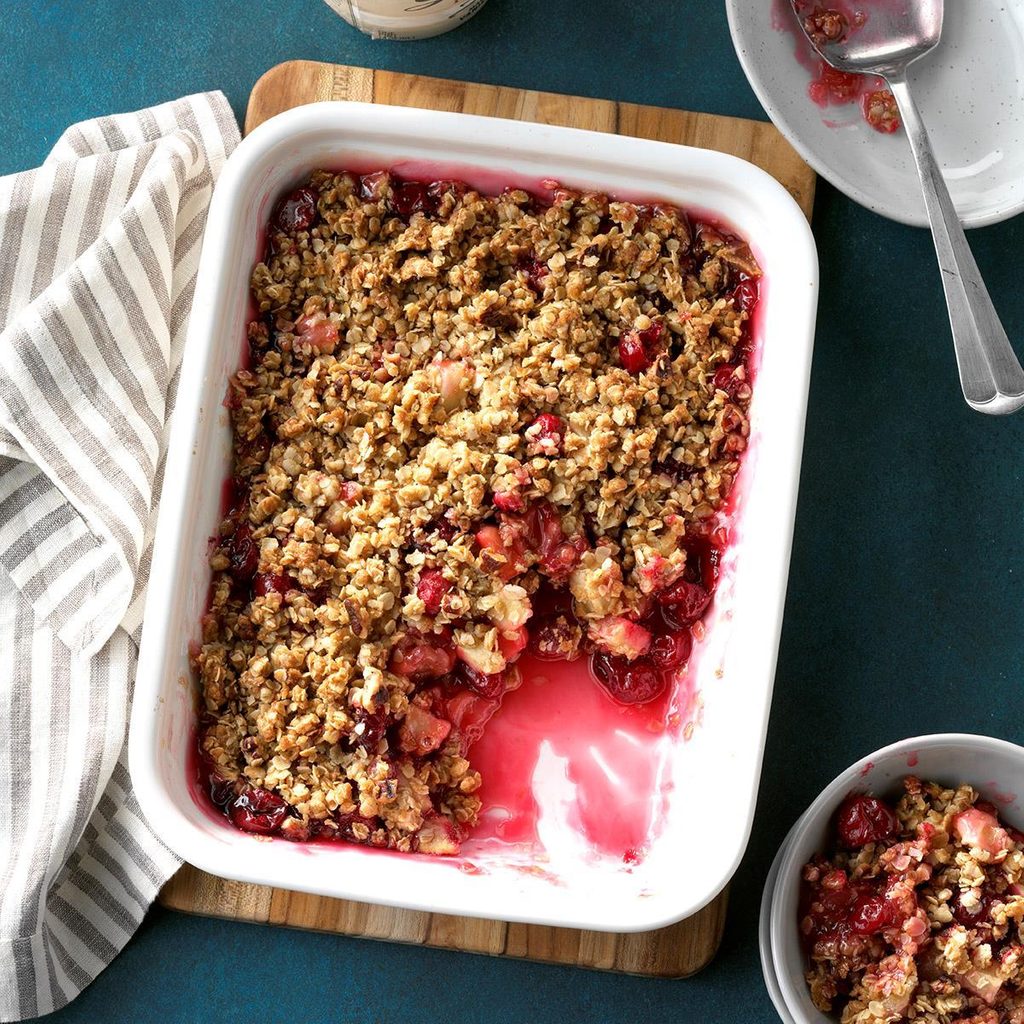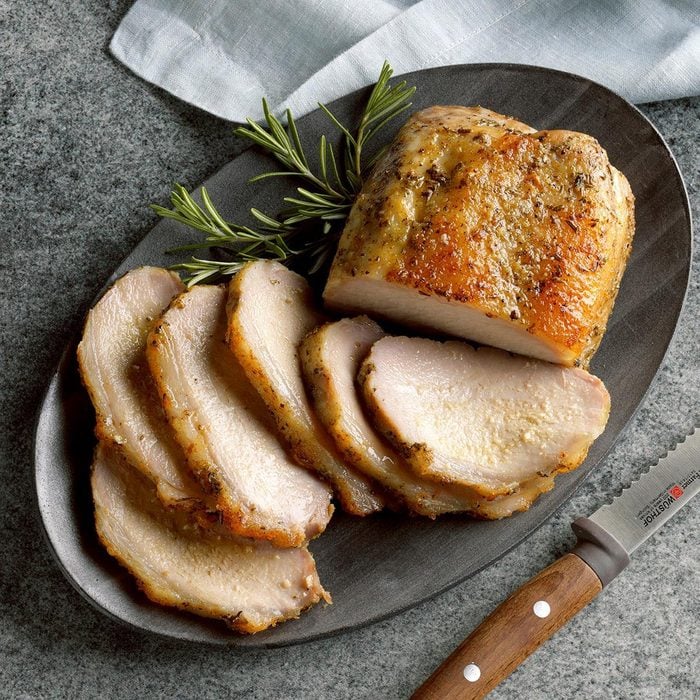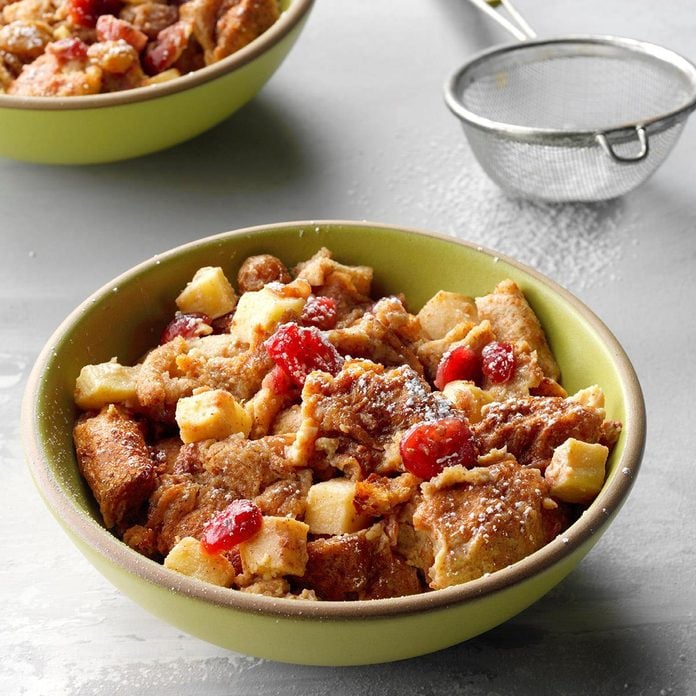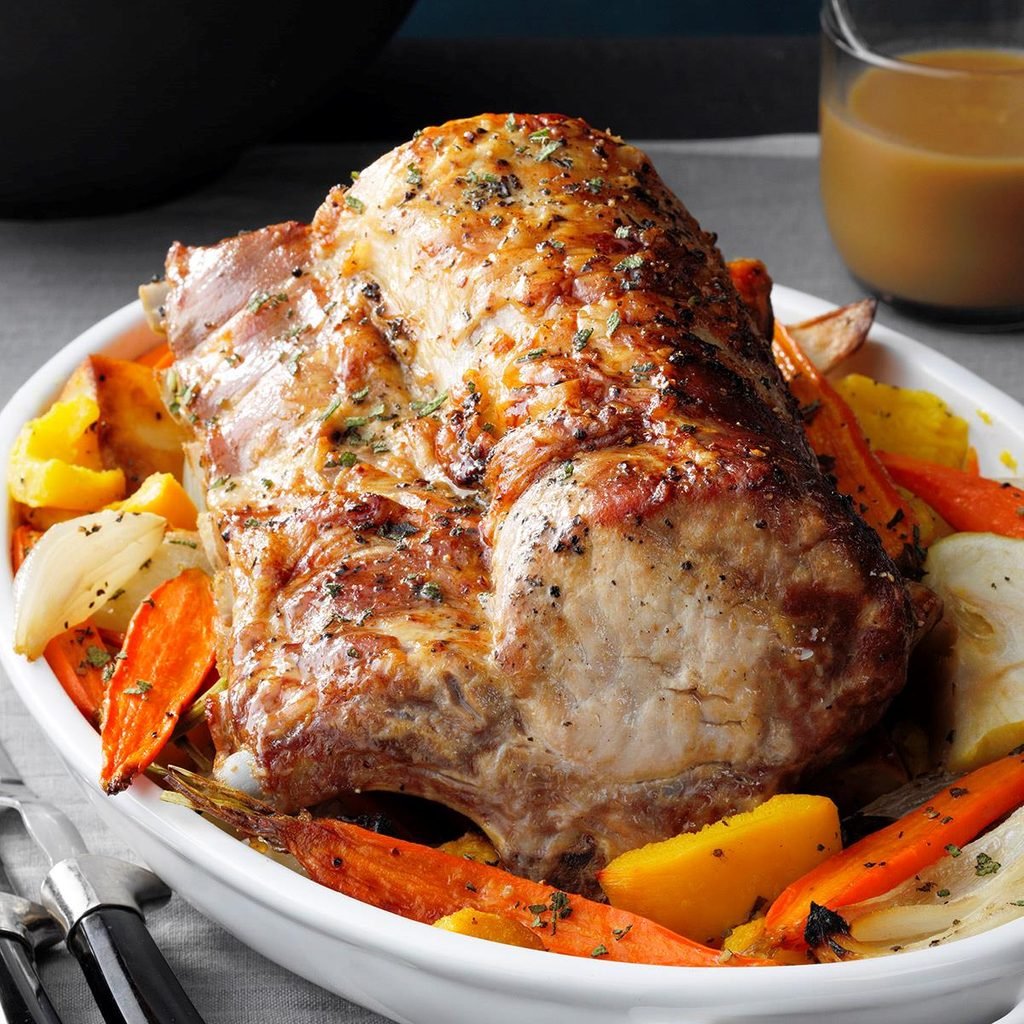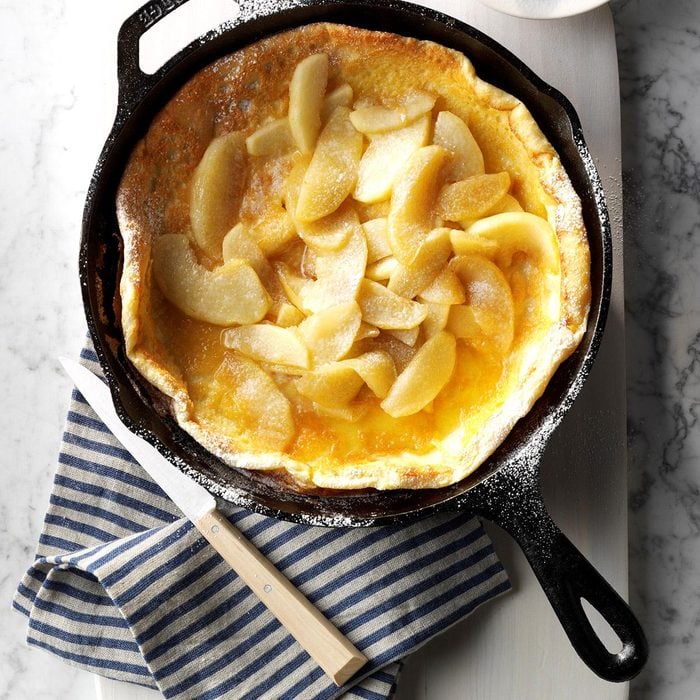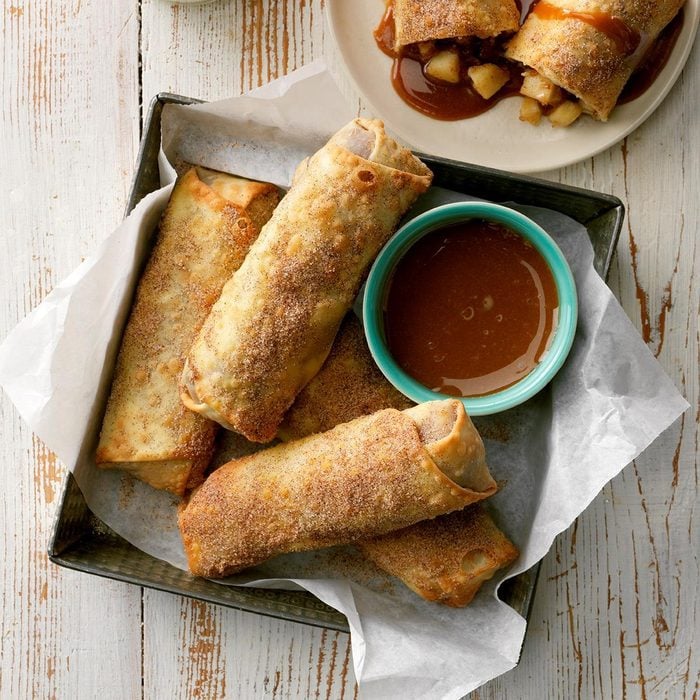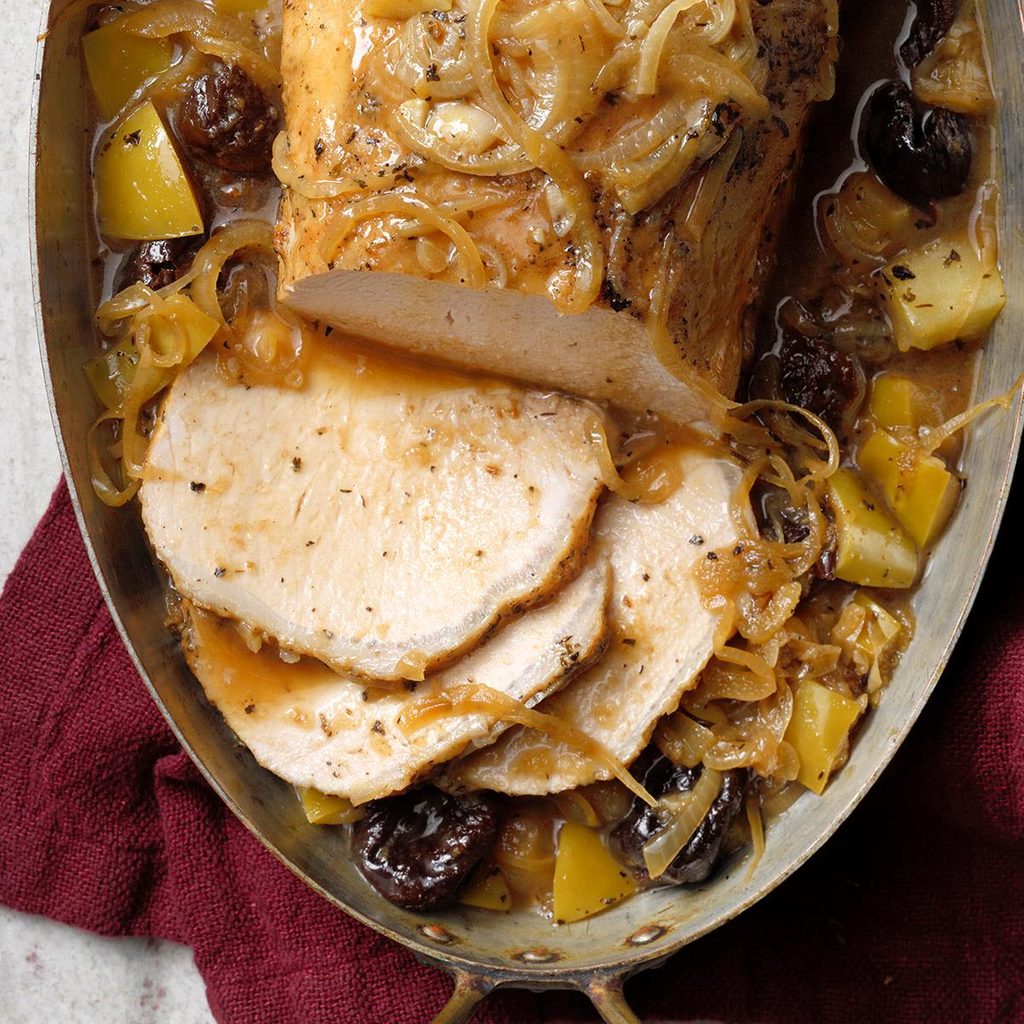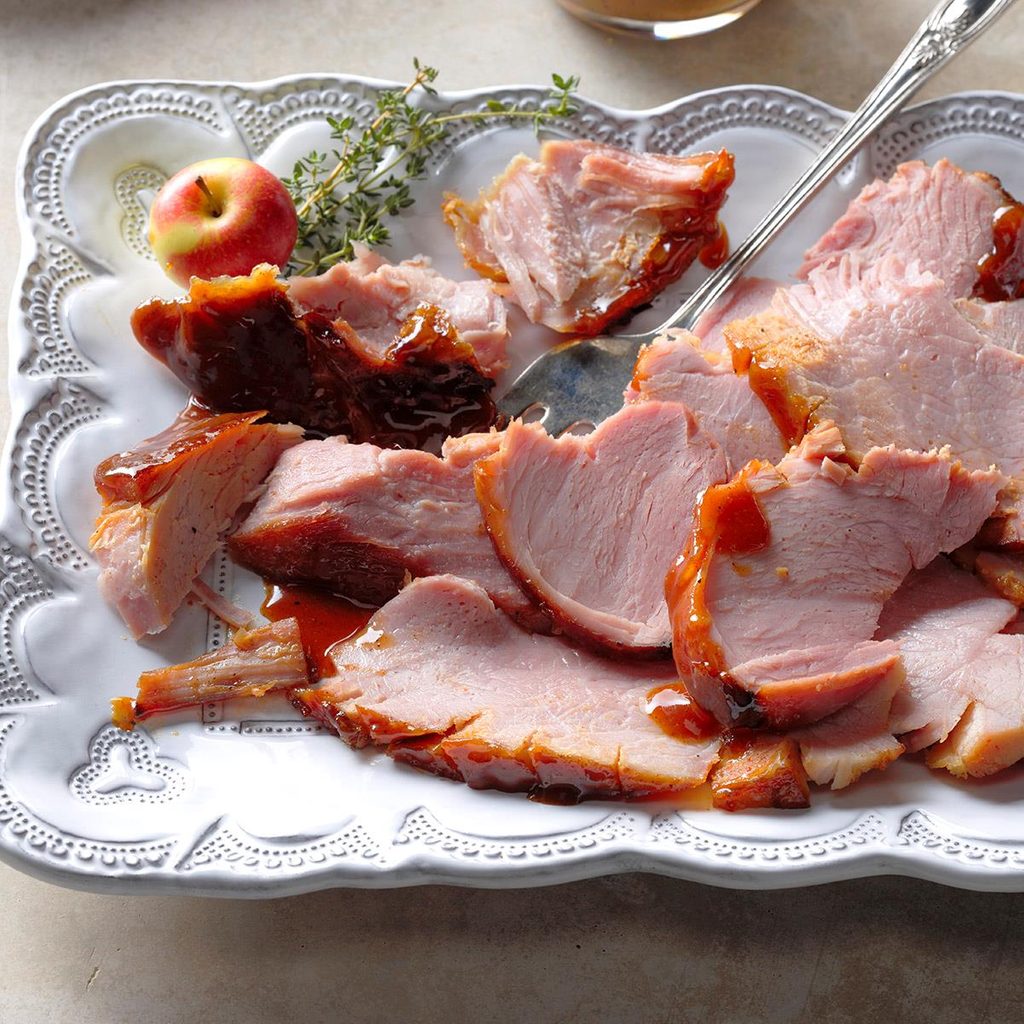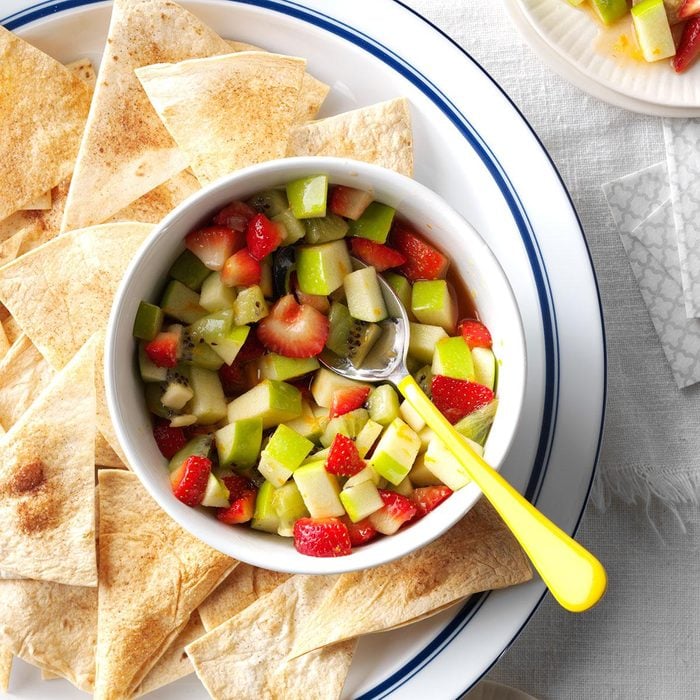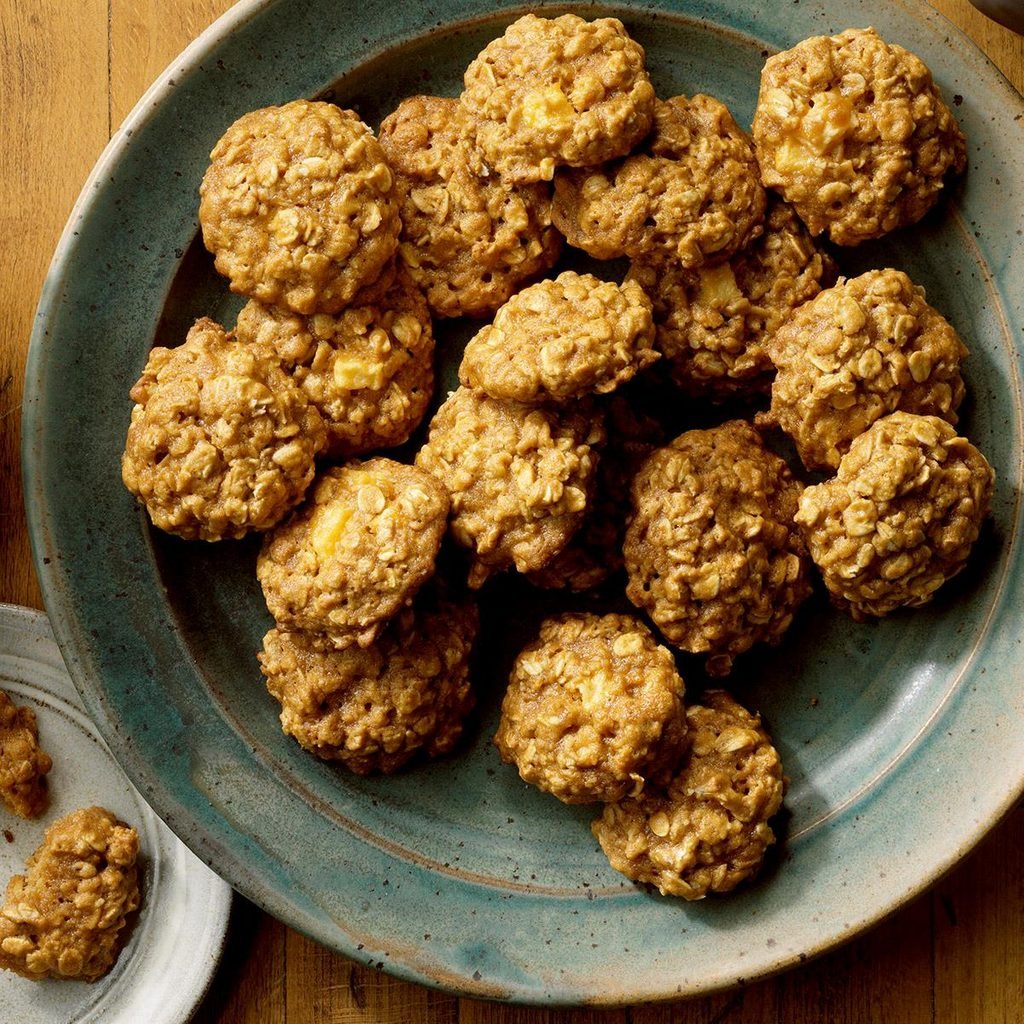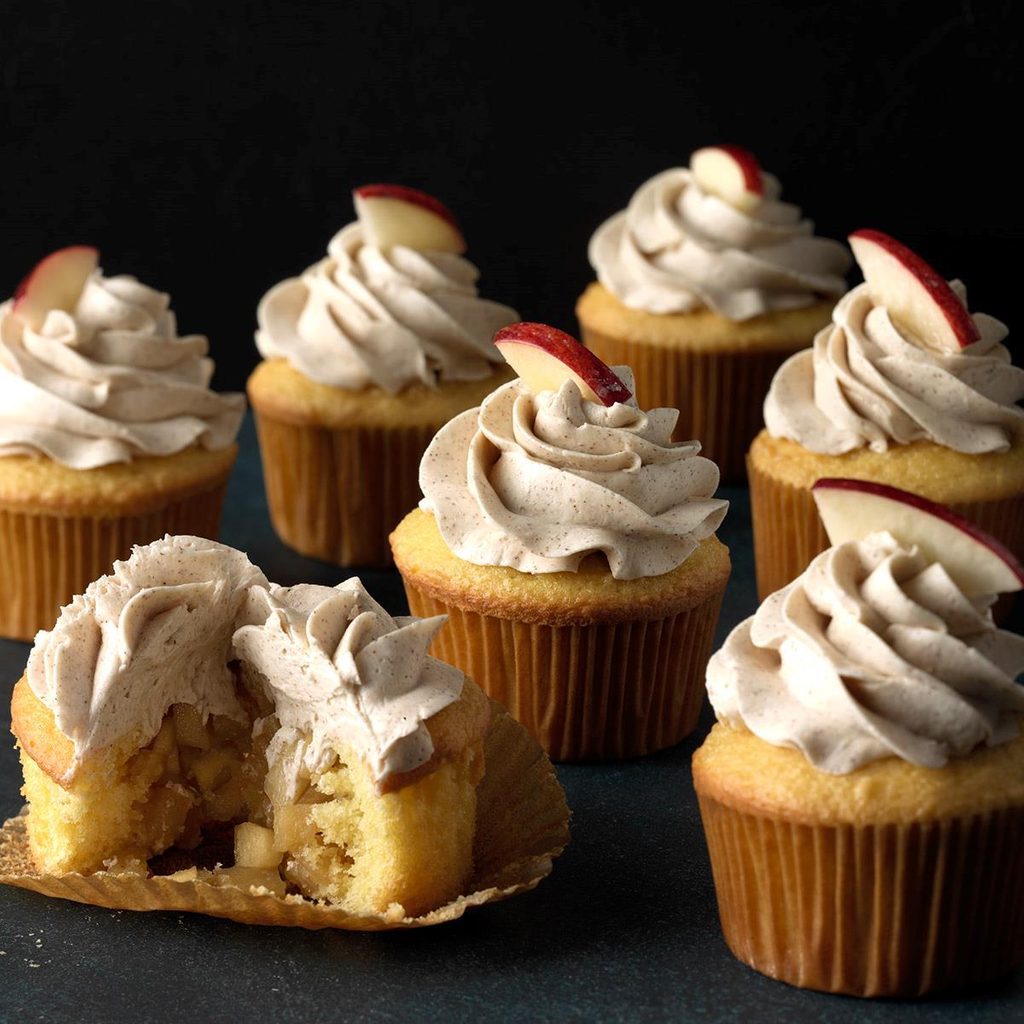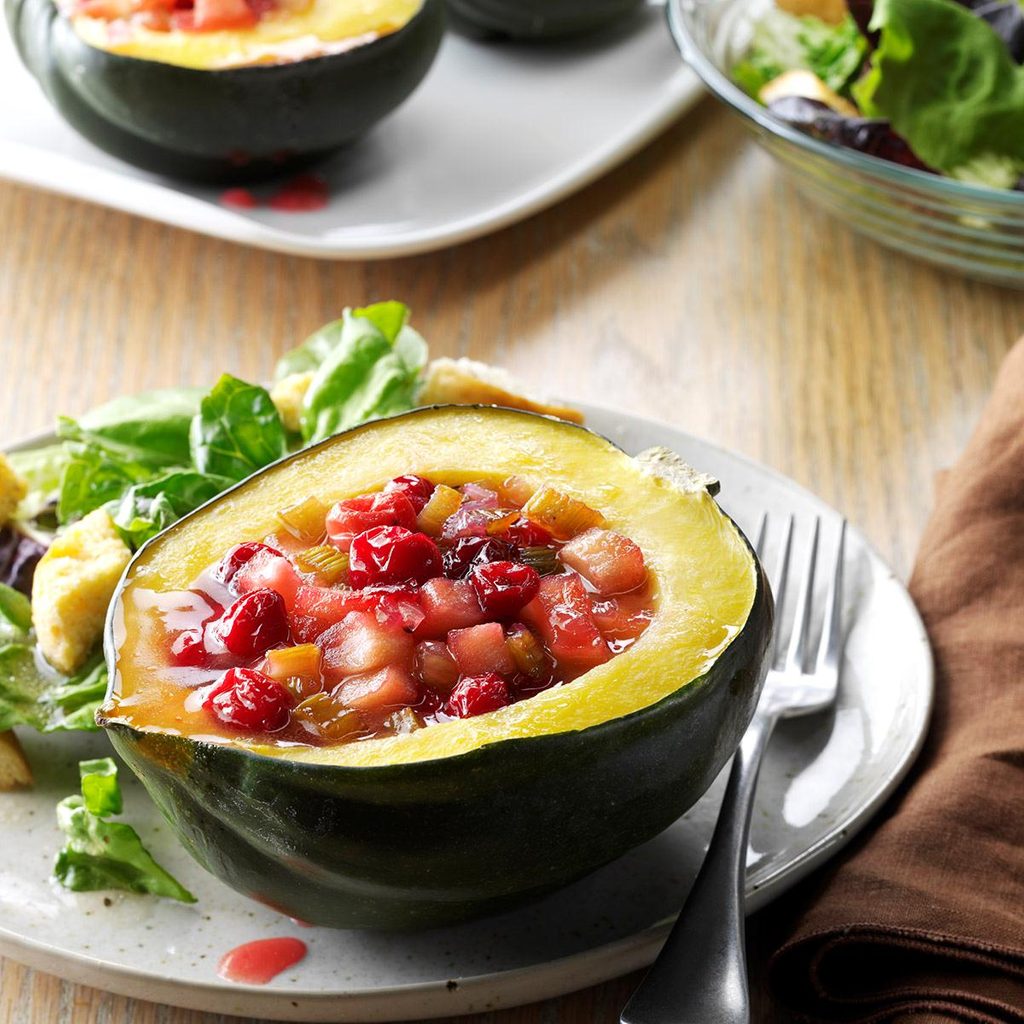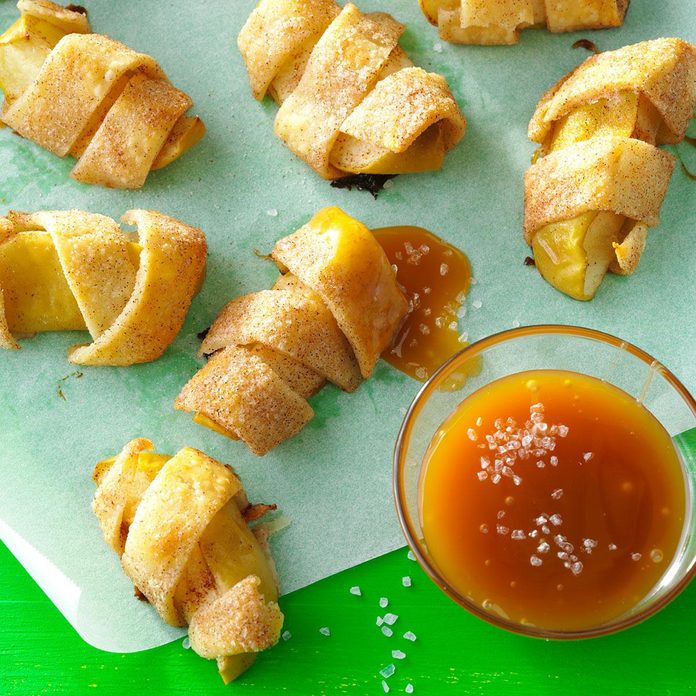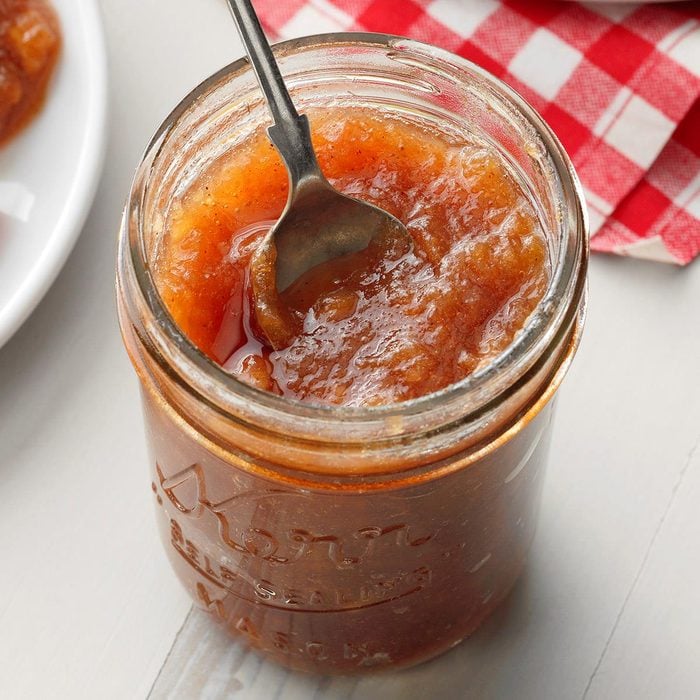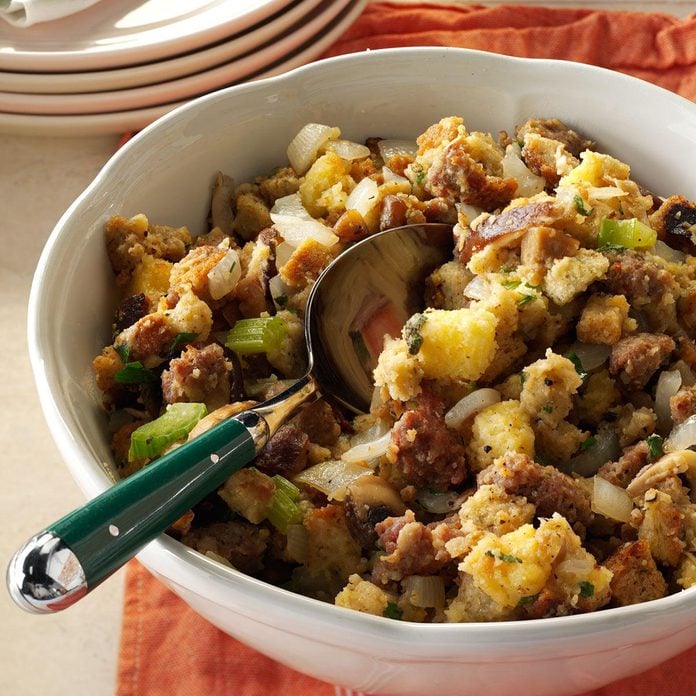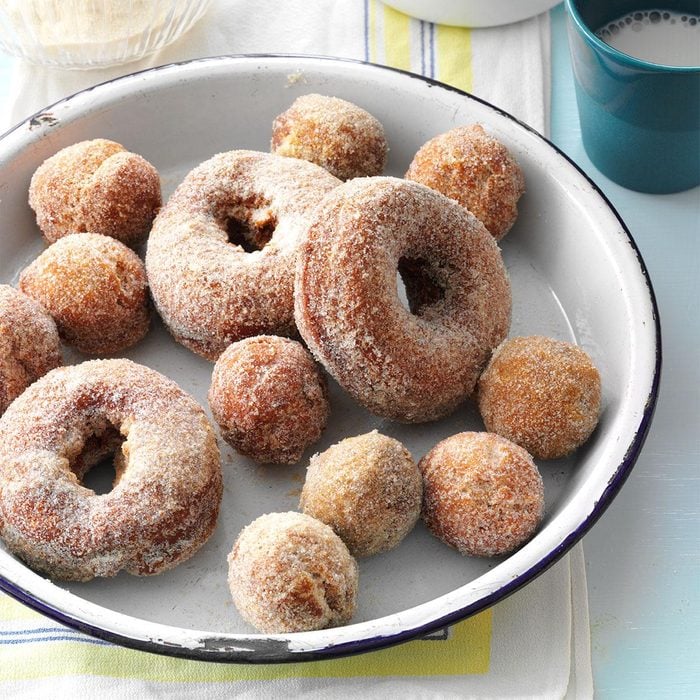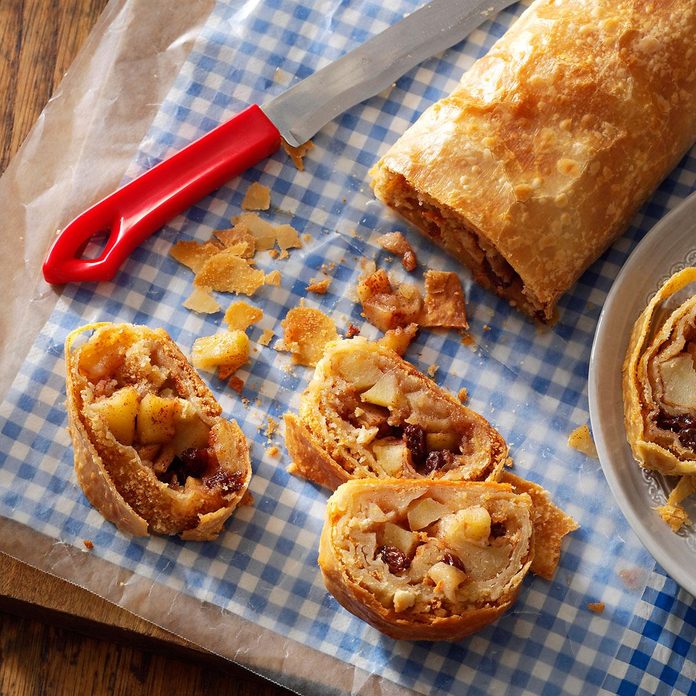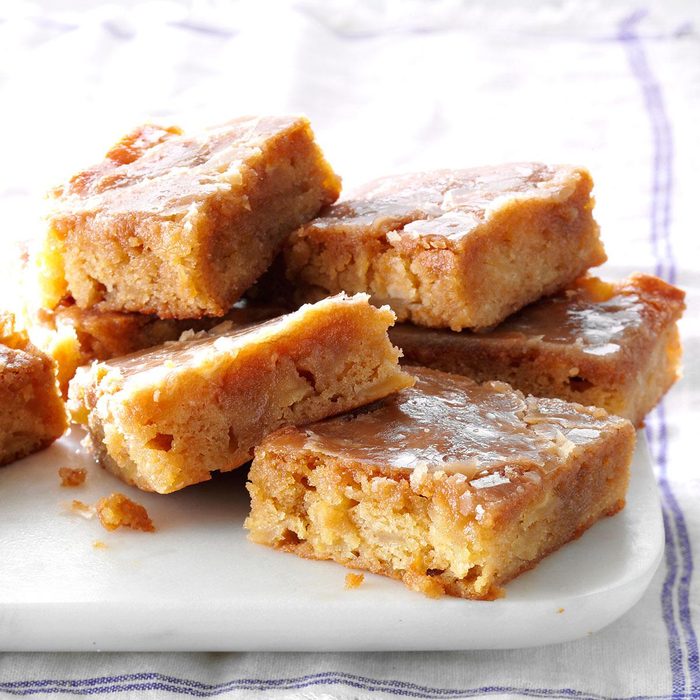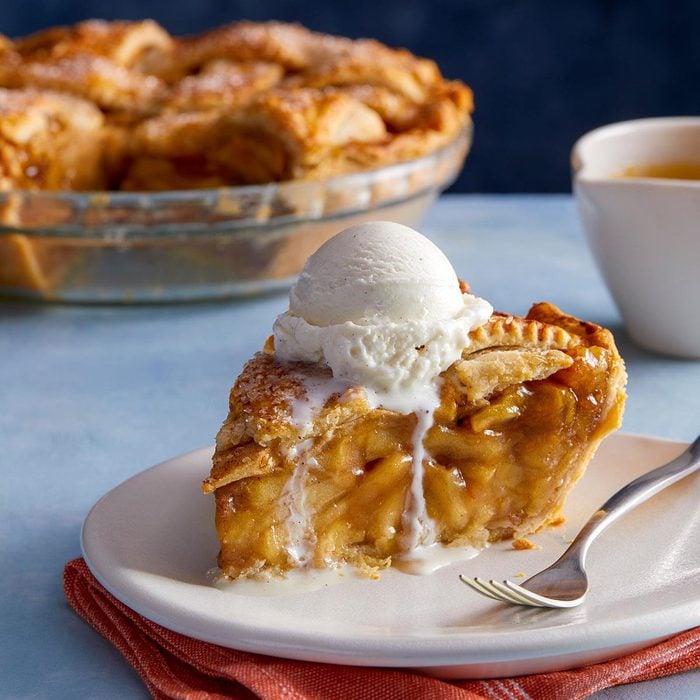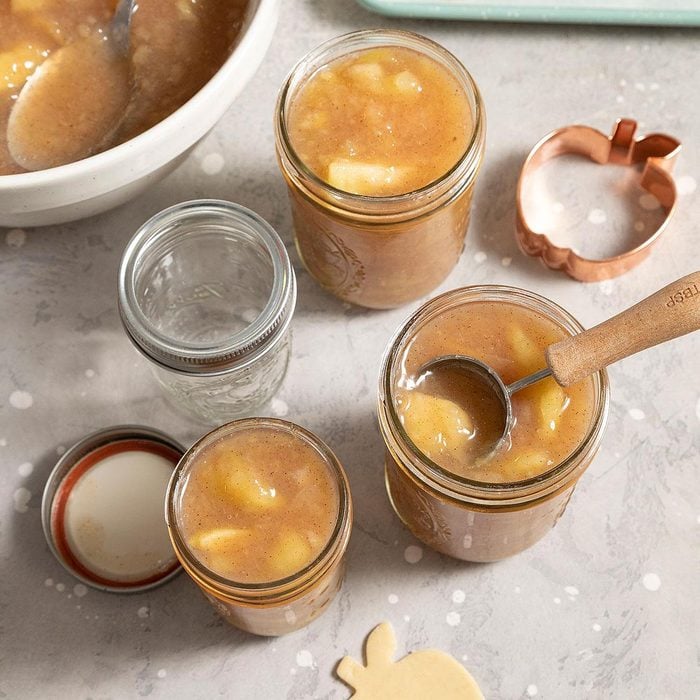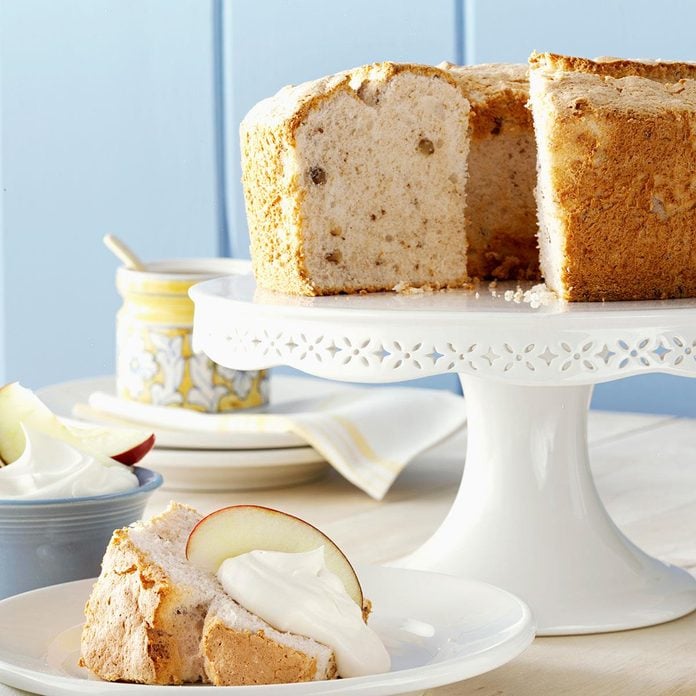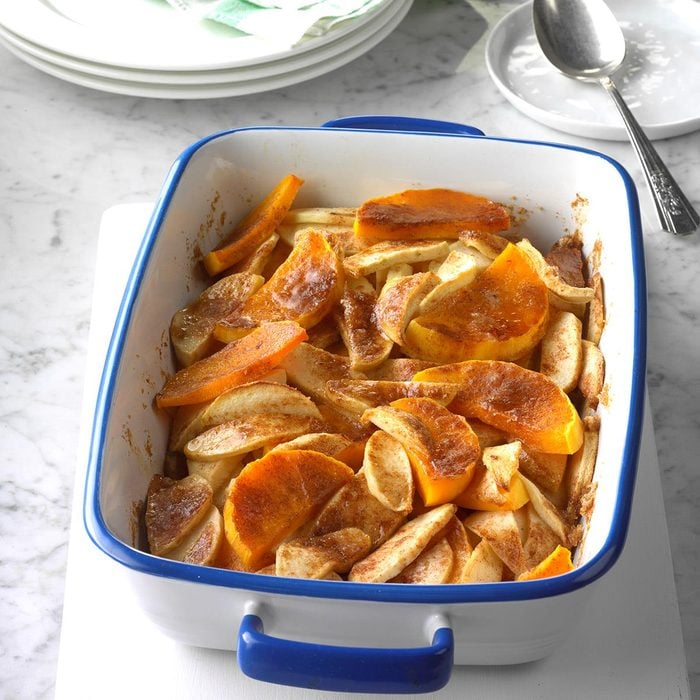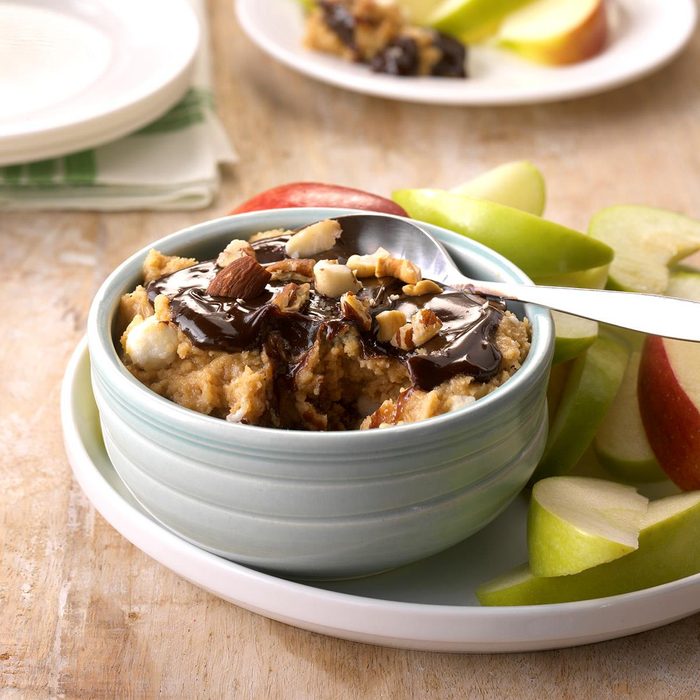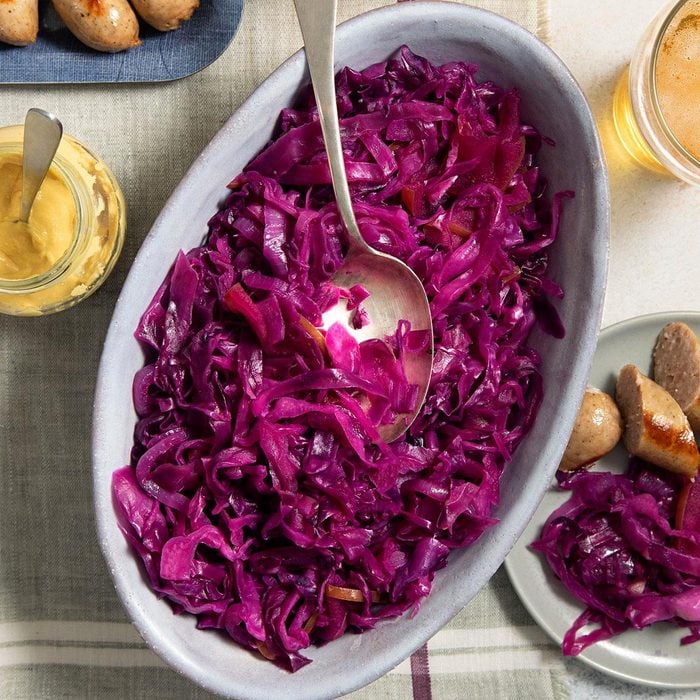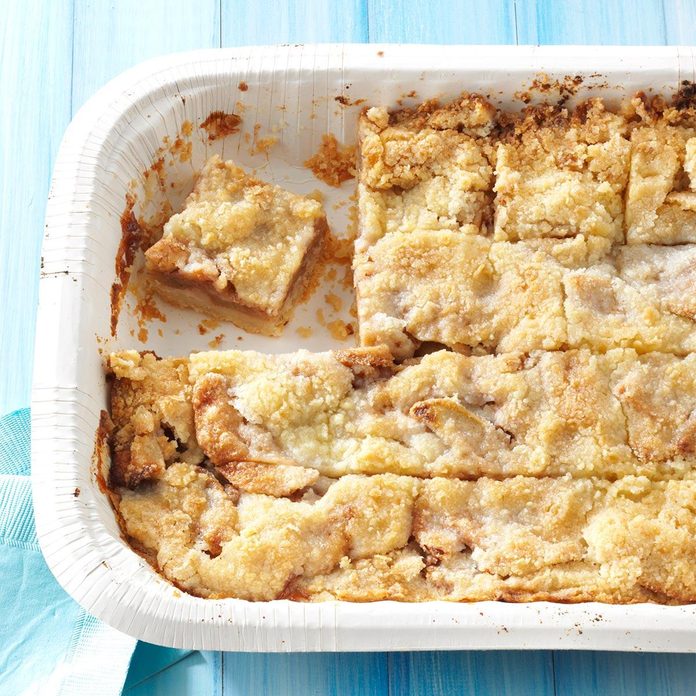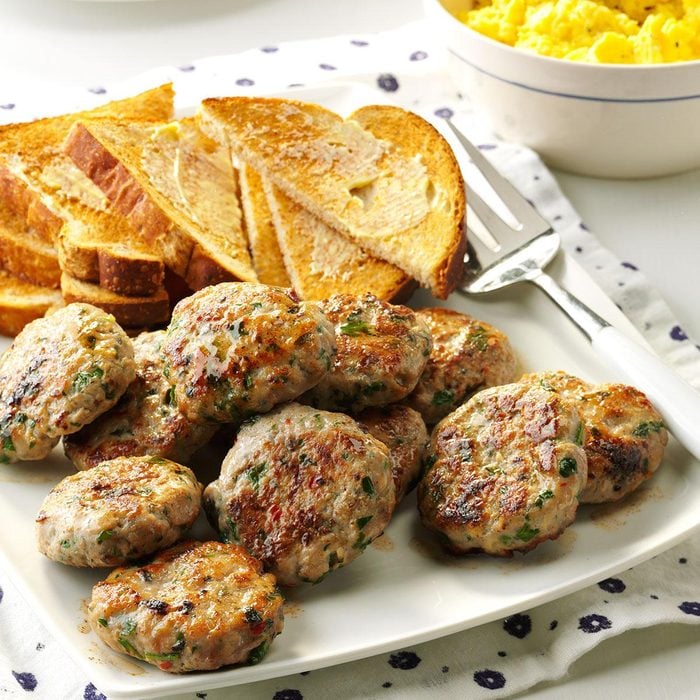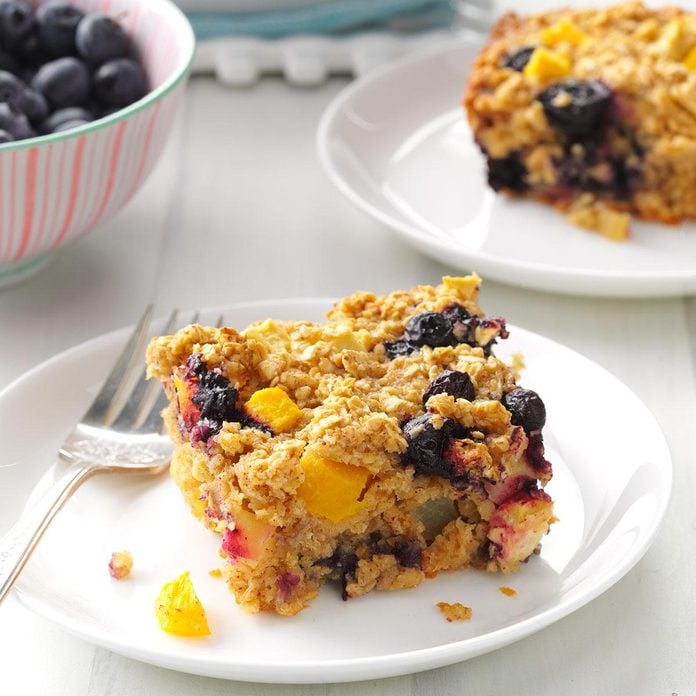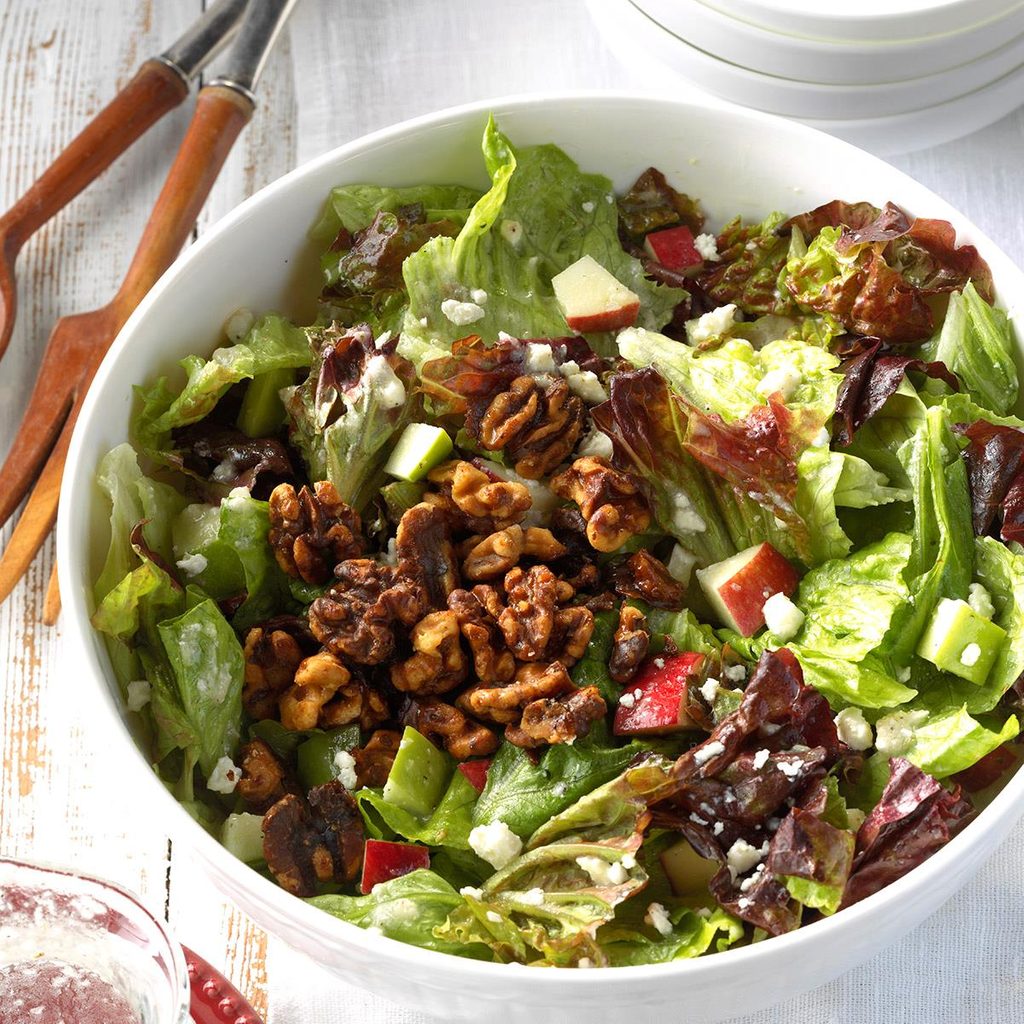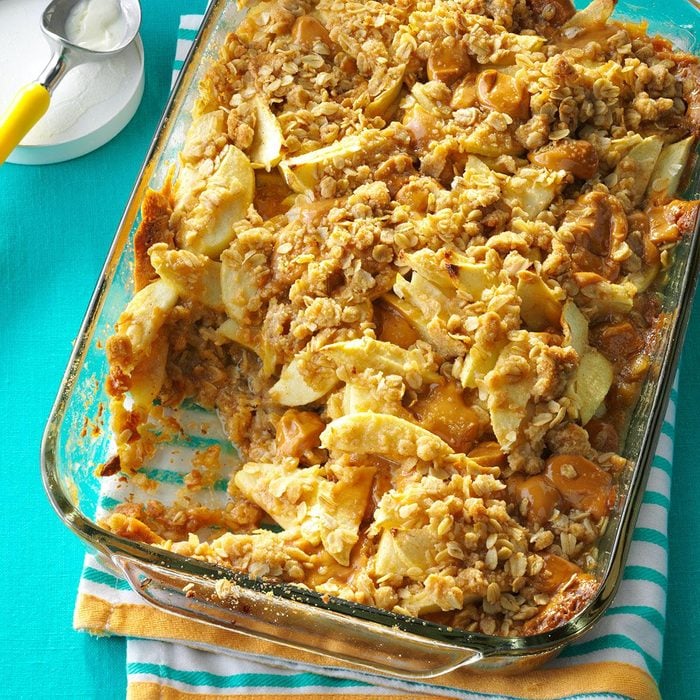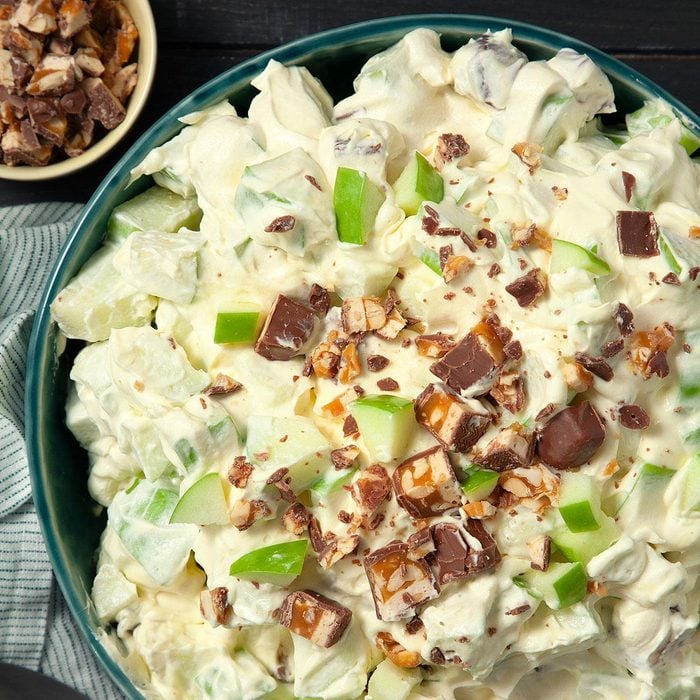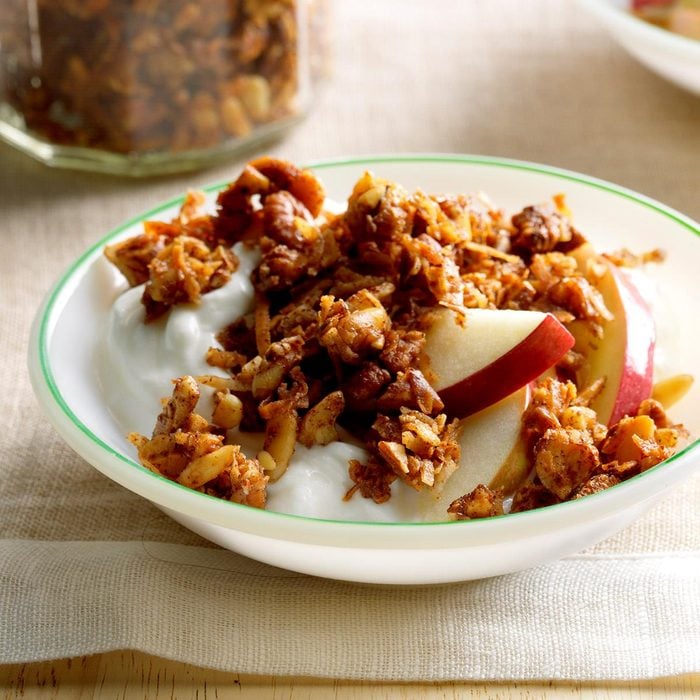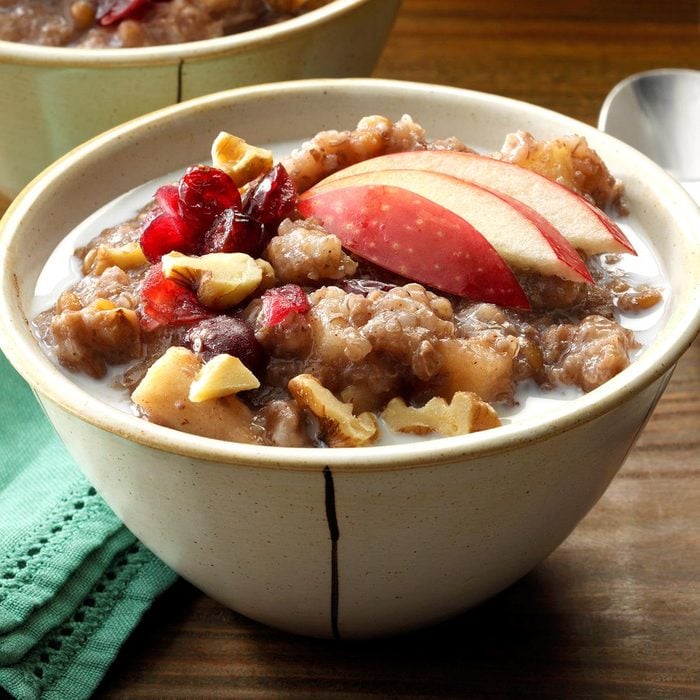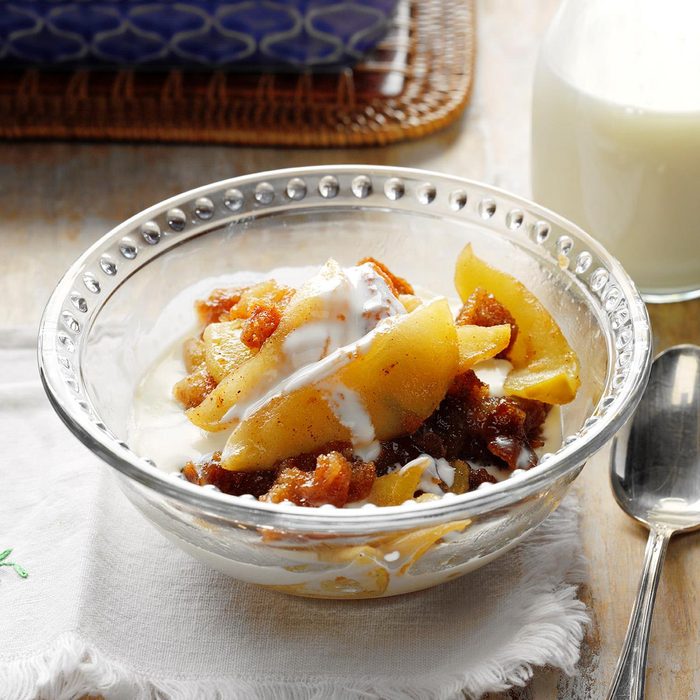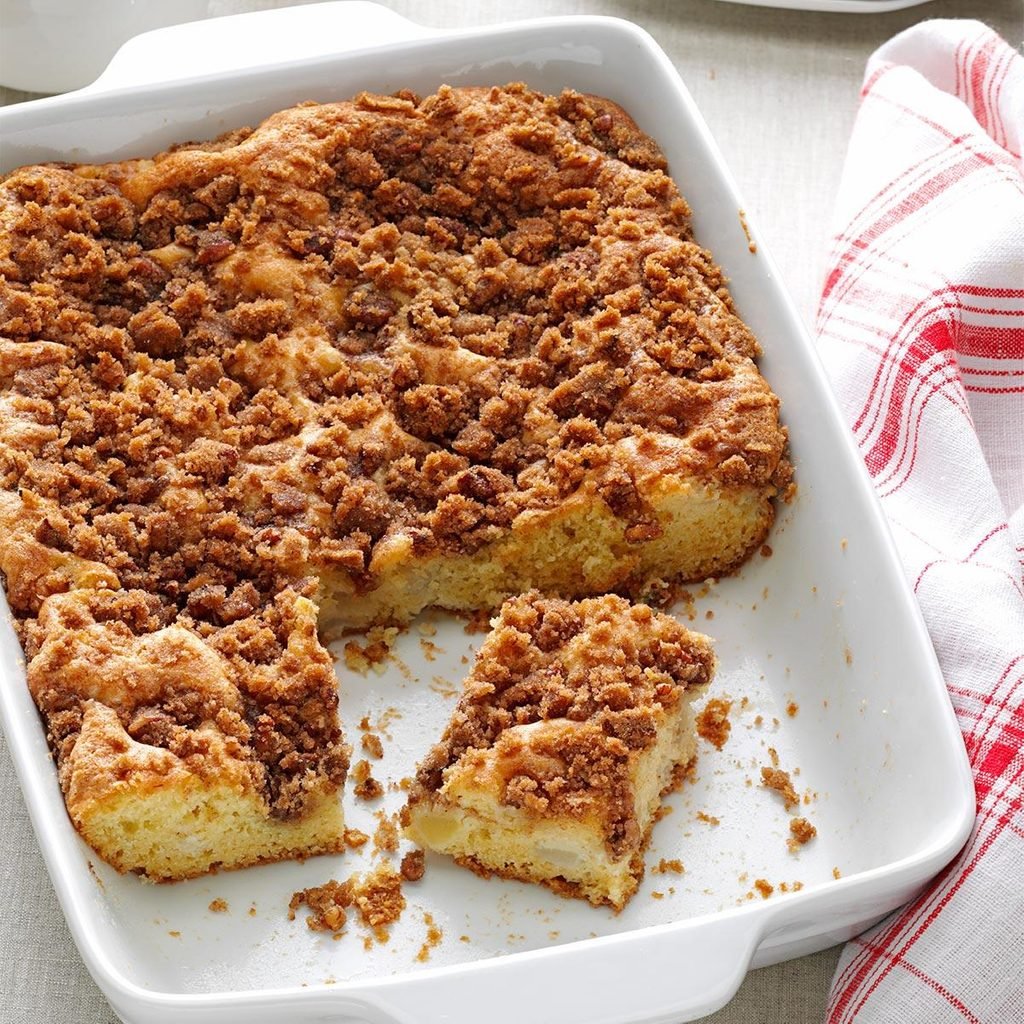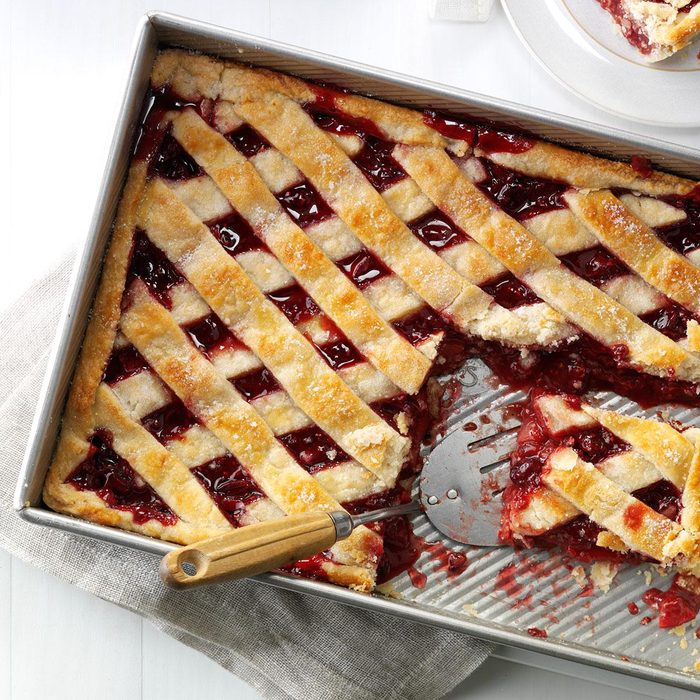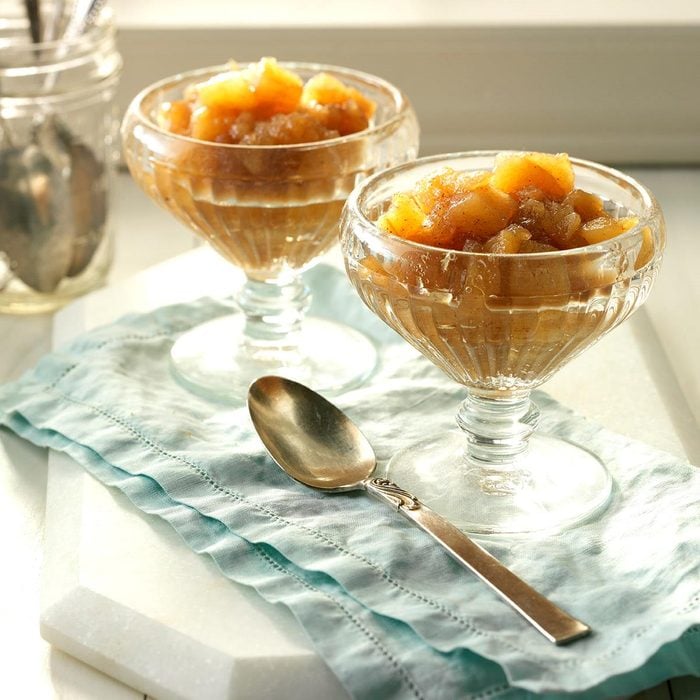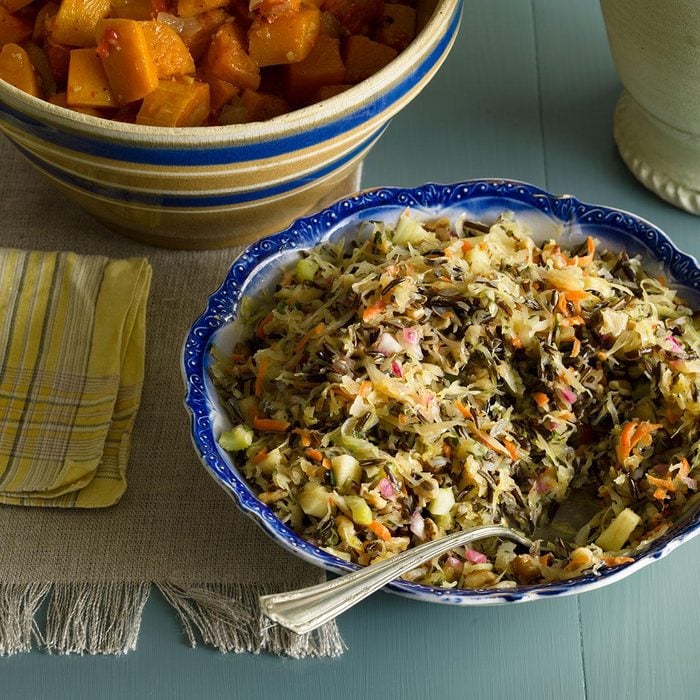Easy Apple Cake
After testing many apple cake recipes with fresh apples, I found this old-fashioned easy apple cake that is moist, dense and down-home delicious. Even better, it's quick to fix, and when it's served warm with whipped cream or a dollop of frozen custard, it's one of my family’s very favorites. —Sherry Ashenfelter, Waterville, Ohio
Go to Recipe
Apple Spice WafflesThese apple waffles are cozy and comforting anytime—morning or evening. The smell of toasty waffles with apples is sure to warm you up on even the most blustery of winter days. —Jane Sims, De Leon, Texas
Apple FrittersThis is an old southern apple fritter recipe. When we got home from a trip through the South years ago, I found the recipe among the brochures I brought back. I've been making these easy apple fritters ever since. —John Robbins, Springdale, Pennsylvania
While you're at it, learn how to make
apple roses, too.
Apple Gingerbread Skillet CakeThis gingerbread recipe came from my grandmother, and we always ate it with warm applesauce. I adapted it into a one-pan dessert by layering the apples around the bottom of a cast-iron skillet and topping them with the gingerbread batter. The skillet creates a wonderfully thick crust on the gingerbread. —Mary M. Leverette, Columbia, South Carolina
German Bratwurst with Sauerkraut and ApplesI created this old-world favorite based on a dish I had during my travels. The flavorful entree is perfect for weeknights or special occasions. I like to serve this slow-cooker bratwurst with pasta. —Gerald Hetrick, Erie, Pennsylvania
Granny’s Apple Scalloped PotatoesThis scalloped potatoes with apples dish is delicious with baked breaded pork chops, which you could cook at the same time in another cast-iron pan. We are retired, so it's just the two of us, but you could easily double the recipe to serve a crowd. —Shirley Rickis, The Villages, Florida
Slow-Cooked Pumpkin Apple CobblerThis spiced cobbler with apples and cranberries is sure to please all of your holiday guests. It is perfect for fall but can be made year-round since it uses fresh or frozen cranberries. —Joan Hallford, North Richland Hills, Texas
Dutch Apple CakeMy husband and I came to Canada from Holland more than 40 years ago. This traditional Dutch recipe is a family favorite and has frequently gone along with me to potluck suppers and other get-togethers. —Elizabeth Peters, Martintown, Ontario
Apple Butter Bread PuddingThis is one of my mother's best recipes! I'm sure your family will be delighted with it too. Serve it as a dessert or a very special breakfast treat. —Jerri Gradert, Lincoln, Nebraska
Oma’s Apfelkuchen (Grandma’s Apple Cake)My husband’s German family calls this
Oma’s apfelkuchen, which translates to "Grandma’s apple cake." They’ve been sharing the recipe for more than 150 years. I use Granny Smith apples, but any variety works. —Amy Kirchen, Loveland, Ohio
Cranberry Apple StuffingOne Thanksgiving, I lost the recipe I planned to use, so I threw this cranberry stuffing together. My cousin Sandy, a die-hard traditional stuffing fan, said this was the best stuffing she’d ever tasted! Talk about a compliment! —Beverly Norris, Evanston, Wyoming
Banana ApplesauceThe recipe has evolved for the many years we have made it. This version has been a favorite at our Christmas dinners.—Judy Batson, Tampa, Florida
Sausage and Pancake CasseroleTrial and error made this pancake casserole recipe one that my family asks for time and time again. It's so easy and very good. —Ethel Sanders, Oklahoma City, Oklahoma
Sage-Apple Cider BreadWho knew sage and apple cider would create such a fantastic bread? This versatile loaf that has just a hint of sweetness makes wonderful sandwiches or stuffing. —Christine Wendland, Browns Mills, New Jersey
Pumpkin and Chicken Sausage HashThis can be served as a side or as the main dish for breakfast, lunch or dinner. I like to serve it topped with poached or fried eggs for breakfast. —Valerie Donn, Williamsburg, Michigan
Apple Peanut Butter CookiesThese apple peanut butter cookies are great for fall gatherings. They're crisp on the outside and soft inside. —Marjorie Benson, New Castle, Pennsylvania
Baked Apple SlicesNothing beats these tender baked apple slices over ice cream for satisfying harvest flavor. This old-fashioned treat gives a new twist to traditional baked apples. They are also excellent served over waffles or with ham. I make sure to save room for dessert! —Linda Gaido, New Brighton, Pennsylvania
Apple and Walnut Stuffed Pork Tenderloin with Red Currant SauceMy roasted pork tenderloin is stuffed with two of our favorite ingredients: walnuts and apples. This comforting entree is my family's most requested pork dish. —Gloria Bradley, Naperville, Illinois
Apple Pie Ricotta WafflesI had apples and ricotta cheese to use up, so instead of making a pie I decided to do something different. The result was these fluffy, tender waffles with just a hint of sweetness. —Teri Rasey, Cadillac, Michigan
Apple Spice Cake with Brown Sugar FrostingI am a healthy eater most of the time, but this apple spice cake is worth the splurge! Every year I treasure the opportunity to make my own birthday cake, and I choose this. You can add a cup of raisins to the batter before baking if you'd like. —Jennifer Owen, Louisville, Kentucky
Polish Kraut with ApplesThe combination of apples, sauerkraut and smoked sausage gives this hearty dinner an old-world flavor. I enjoy this, and it's so easy to make. —Caren Markee, Cary, Illinois
Hot CiderI dress up apple cider using lemonade, orange juice, honey and spices for a new version of the classic fall beverage. —Glenna Tooman, Boise, Idaho
Upside-Down Apple Bacon PancakeI frequently cook Sunday brunch for my husband and myself, and I am always experimenting with new recipes. Apples picked from our tree were the inspiration behind these sweet and savory pancakes, which my husband quickly declared a keeper. —Sue Gronholz, Beaver Dam, Wisconsin
Cast-Iron Apple Nutmeg Coffee CakeI'm not a great baker, but I do love coffee. In an effort to practice my baking, I use up the morning's last bit of coffee to make this cake—literally. It is super moist and crumbly, and tastes as if you dunked your cake right into a cup of hot joe. —Darla Andrews, Schertz, Texas
Apple, Butternut and Sausage DressingI'd heard about using squash in dressing, so I combined four things I love into one dish: apples, butternut squash, bacon and maple sausage! Now, it's one of the most requested dishes during the holidays. —Brenda Crouch, Ansley, Nebraska
Apple Cranberry Upside-Down CakesCornmeal gives this upside-down cake a unique texture. Apples, cranberries and pecan make a delicious alternative to the typical pineapple and cherries. —Margee Berry, Trout Lake, Washington
Caramel Apple SconesA drizzle of caramel complements the apple and whole wheat flavors of these rustic-looking scones. —Arlene Cook, Bainbridge, Georgia
Rustic Caramel Apple TartLike an apple pie without the pan, this scrumptious tart has a crispy crust that cuts nicely and a yummy caramel topping. —Betty Fulks, Onia, Arkansas
Cranberry Apple CrispApple cranberry crisp is a wonderful dessert for fall, when both cranberries and apples are in season. The fruits are quite compatible in flavor and color, and they help make any table look festive and inviting. —Martha Sue Stroud, Clarksville, Texas
Roast Pork Loin with Rosemary ApplesauceI made this for a family get-together on my husband's birthday. The homemade rosemary applesauce adds an extra layer of comfort to the tender pork. —Angela Lemoine, Howell, New Jersey
Air-Fryer Apple FrittersThese air-fryer apple fritters are healthier than old-fashioned fritters, yet they are still just as delicious. They're a quick and easy dessert that includes a scrumptious brown butter glaze! —Alyssa Castriotta, North Scituate, Rhode Island
Slow-Cooked Bread PuddingThis warm and hearty dessert is perfect on any cold, blustery winter evening. And the slow cooker fills your kitchen with an amazing aroma. My stomach is growling just thinking about it! —Maiah Albi, Carlsbad, California
Autumn Pork RoastAlthough this main meal captures the fabulous flavor of fall, don't hesitate to serve it throughout the year. Your family will flock to the table when they smell this delicious roast. It's a hearty dish that makes everyday dinners more special.—Kathy Barbarek, Joliet, Illinois
German Apple PancakeIf you're looking for a pretty dish to make when having guests for brunch, try this. Everyone I've served it to has enjoyed it—except for one time, that is, when my husband tried to make it following my recipe, which I'd written down incorrectly! If you don't leave out the flour as I did, it'll turn out terrific! —Judi Van Beek, Lynden, Washington
Grilled Apple Tossed SaladThe grilled apples in this salad combine so well with the blue cheese, walnuts and balsamic dressing. I like to serve it on pink Depression glass dessert plates from my great-grandmother. —Paul Soska, Toledo, Ohio
Air-Fryer Apple Pie Egg RollsThese easy apple pie egg rolls can be prepared as needed, using egg roll wrappers as vessels for the fruit rather than traditional pie crust. The air-fryer method of cooking results in a crispy, crunchy crust with a tender, juicy filling. Flavored cream cheese spread may be used instead of plain, depending on availability. —Sheila Suhan, Scottdale, Pennsylvania
Winning Apple CrispI live in apple country, and making a delicious apple crisp is one way to use the fruit. This treat doesn’t take a lot of time to assemble. —Gertrude Bartnick, Portage, Wisconsin
Pressure-Cooker Pork with Apples and Dried PlumsThe classic flavors of herbes de Provence, apples and dried plums make this easy cooked pork taste like a hearty meal at a French country cafe. For a traditional pairing, serve the pork with braised lentils. —Suzanne Banfield, Basking Ridge, New Jersey
Apple KolachesA fellow home cook shared this recipe for a sweet, fruit-filled pastry. My son, who isn’t a dessert fan, was disappointed when he came home to find his dad had polished off the last kolache in the batch. —Ann Johnson, Evansville, Indiana
Apple Cider-Glazed HamWhen I wanted to try something new with our holiday ham, I created this cider glaze. It's slightly sweet but still has the spicy flavor my family craves. —Rebecca LaWare, Hilton, New York
Apple Salsa with Cinnamon ChipsBoth my husband and I were raised on farms, and we prefer home cooking to eating out. That works out fine since I love trying new recipes! I've served this apple salsa as an appetizer and a snack. Plus, it's sweet enough to be a dessert. It's easy to transport besides. —Carolyn Brinkmeyer, Golden, Colorado
Oatmeal Caramel Apple CookiesThis recipe for caramel apple cookies is a fun twist on traditional oatmeal raisin. These treats are hard to resist! —Rachel Lewis, Danville, Virginia
Apple Pie Cupcakes with Cinnamon ButtercreamThese apple pie cupcakes are always a hit! They are so easy to make and the flavor just screams fall. Of course, they're equally delicious any other time of year. —Jennifer Stowell, Deep River, Iowa
Acorn Squash with Cranberry StuffingIf you have squash or cranberry lovers at the table, here’s your new go-to recipe. It’s colorful, the blend of flavors is delicious and it’s a fitting addition to a Thanksgiving menu. —Dorothy Pritchett, Wills Point, Texas
Upside-Down Apple PieThis pie has won eight ribbons at area fairs. People say it looks and tastes like a giant apple-cinnamon bun. I take time off from work around the holidays to fill pie requests from family and friends. The recipe has become everyone's favorite. —Susan Frisch, Germansville, Pennsylvania
Don't forget to check out this easy
fried apple pie recipe.
Apple Pie BitesThese apple pie bites are fun for kids to make. Simply wrap strips of pastry around apple wedges and shake on some cinnamon-sugar. Then just bake and watch them disappear! —Taste of Home Test Kitchen
Apple ButterI make several batches of this simple and delicious homemade apple butter recipe to freeze in jars. Depending on the sweetness of the apples used, you can adjust the sugar to taste. —Betty Ruenholl, Syracuse, Nebraska
"Everything" StuffingMy family goes crazy for this stuffing that I make in the slow cooker. It freezes well so we can enjoy it long after Thanksgiving has passed. —Bette Votral, Bethlehem, Pennsylvania
Apple Cider DoughnutsApple doughnuts remind me of family trips to South Dakota. We’d stop at Wall Drug for a dozen or so before camping in the Badlands. Maple glaze was and still is my favorite. Share a batch with friends and family who appreciate a hot, fresh apple cider doughnut. —Melissa Hansen, Milwaukee, Wisconsin
German Apple StrudelThis gorgeous strudel has just what you crave this time of year: thin layers of flaky crust and lots of juicy apples. —Darlene Brenden, Salem, Oregon
Apple Chicken QuesadillasMy sister came up with an easy recipe that can be served as a main course or an appetizer. People are surprised by the combination of chicken, apples, tomatoes and corn inside the crispy tortillas, but they love it. —Stacia Slagle of Maysville, Missouri
Glazed Apple-Maple BlondiesMy 6-year-old son and I conjured up this recipe to use the last of the apples we picked from the local apple orchard. Each bar goes beautifully with a dollop of sweetened whipped cream. —Heather Bates, Athens, Maine
Apple & Cheddar Mini SconesBecause cheese and sage go so well with apples, I decided to put them all in scones. These mini treats make a fall weekend brunch, tailgate or party even more fun. —Sue Gronholz, Beaver Dam, Wisconsin
Apple PieI remember coming home sullen one day because we'd lost a softball game. Grandma, in her wisdom, suggested that maybe a slice of hot apple pie would make me feel better. She was right. —Maggie Greene, Granite Falls, Washington. Next, try this
apple pie with cheese.
Cinnamon-Apple Pork ChopsWhen I found this pork chops with apples recipe online years ago, it quickly became a favorite. The ingredients are easy to keep on hand, and the one-pan cleanup is a bonus. —Christina Price, Pittsburgh, Pennsylvania
Apple Pie FillingMy family is always delighted to see an oven-fresh pie cooling on the counter. What a convenience it is to have jars of homemade freezer apple pie filling on hand so I can treat them to pies year-round. —Laurie Mace, Los Osos, California
Apple-Spice Angel Food CakeI dressed up an angel food cake mix with some nuts, spice and applesauce to make an easy and light dessert. I serve it with a dollop of whipped topping mixed with a half cup of sour cream. —Joan Buehnerkemper, Teutopolis, Illinois
Butternut Squash Apple BakeEven those who aren't fans of squash enjoy this side dish. Sweet slices of butternut squash are topped with apples covered in a cinnamon-sugar glaze for a quick and easy dinner accompaniment. —Ellie Klopping, Toledo, Ohio
Slow-Cooker Pork and Apple CurryHere's a gentle curry dish that's sure to please American palates. For fun, try varying the garnish—add a few chopped peanuts or a little chutney. —Nancy Reck, Mill Valley, California
Festive Apple DipI came up with this layered peanut butter treat when my dad gave me a big bag of apples. The dip has been one of my favorites ever since. In addition to serving it with apples, try it with graham crackers, vanilla wafers, banana chunks or animal crackers. —Theresa Tometich, Coralville, Iowa
German Red CabbageSunday afternoons were a time for family gatherings when I was a kid. While the uncles played cards, the aunts made treats such as this traditional German red cabbage recipe. —Jeannette Heim, Dunlap, Tennessee
Apple Kuchen BarsThis recipe is about family, comfort and simplicity. My mom made this delicious sweet treat many a winter night and served it warm with some of her famous homemade ice cream. I like to make a double batch and pass on the love! —Elizabeth Monfort, Celina, Ohio
Apple-Almond MuffinsI like to snack on apple slices slathered with almond butter. That's the flavor combo that inspired these muffins. Add a dash of almond extract to boost the nuttiness. —Kelly Alesso, Chicago, IL
Apple-Sage Sausage PattiesApple and sausage naturally go together. Add sage, and you’ve got some standout patties. They’re freezer friendly, so I make them ahead and grab when needed. —Scarlett Elrod, Newnan, Georgia
Fruity Baked OatmealThis is my husband’s favorite breakfast treat and the ultimate comfort food. It’s warm, filling and always a hit when I serve it to guests. —Karen Schroeder, Kankakee, Illinois.
Apple-Feta Tossed SaladA friend of mine shared this recipe with me after I raved about the delightful salad at dinner. I have served it for years now, and no matter where i take it, I have to bring along copies of the recipe to hand out.
-Marlene Clark
Apple Valley, California
Potluck German Apple CakeMy mother made this German apple cake for my brothers and me when we were kids. It's an excellent choice for a
Christmas potluck or actually any time of year. —Edie DeSpain, Logan, Utah
Contest-Winning Caramel Apple CrispWhen my kids and I make apple crisp, we use all sorts of apples to boost the flavor and texture. Add melted caramels, and you’ve got something scrumptious. —Michelle Brooks, Clarkston, Michigan
Pecan Apple PancakesWeekend brunches are a big deal here in Texas, and these sweet, well-spiced pancakes make any breakfast special. So put on your apron and invite the neighbors in! —Sharon Richardson, Dallas, Texas
Candy Bar Apple SaladThis creamy, sweet salad with crisp apple crunch is a real people-pleaser. It makes a lot, which is good, because it will go fast! —Cyndi Fynaardt, Oskaloosa, Iowa
Grain-Free Apple Pie GranolaBecause of food allergies, I’ve learned to swap ingredients. There are no grains in this granola but loads of nuts and apples. Try it with yogurt or milk. —Courtney Stultz, Weir, Kansas
Apple-Cranberry GrainsThese delicious slow-cooker grains are perfect. I set my slow cooker to start automatically overnight and a hearty breakfast is ready in the morning, making this quick and healthy recipe a favorite in my home. —Sherisse Dawe, Black Diamond, Alberta, Canada
Apple Brown BettyThis apple brown betty can be whipped up in hardly any time. It costs little to prepare, but it's big on flavor. —Florence Palmer, Marshall, Illinois
Apple Pear Coffee CakeA friend gave me this apple pear coffee cake recipe to make for a breakfast I was hosting. The pan was empty before the breakfast was over! It's one of my most-requested recipes, probably because it's a bit different. —Joanne Hoschette, Paxton, Massachusetts
Apple Cranberry Slab PieMy husband loves pie, so I made one with apples, raspberries and cranberries. It’s so good, I bend the rules and let the grandkids have it for breakfast. —Brenda Smith, Curran, Michigan
Chunky ApplesauceThere's just something extra special about a homemade applesauce recipe like this one. This simple dish is tart and not too sweet. It makes the perfect side, especially with pork chops or a pork roast. —Deborah Amrine, Grand Haven, Michigan
Northwoods Wild Rice SaladThis is my Minnesota version of a vintage German slaw that’s popular at church suppers. The wild rice has a nutty flavor that pairs perfectly with tangy sauerkraut. —Jeanne Holt, St. Paul, Minnesota
